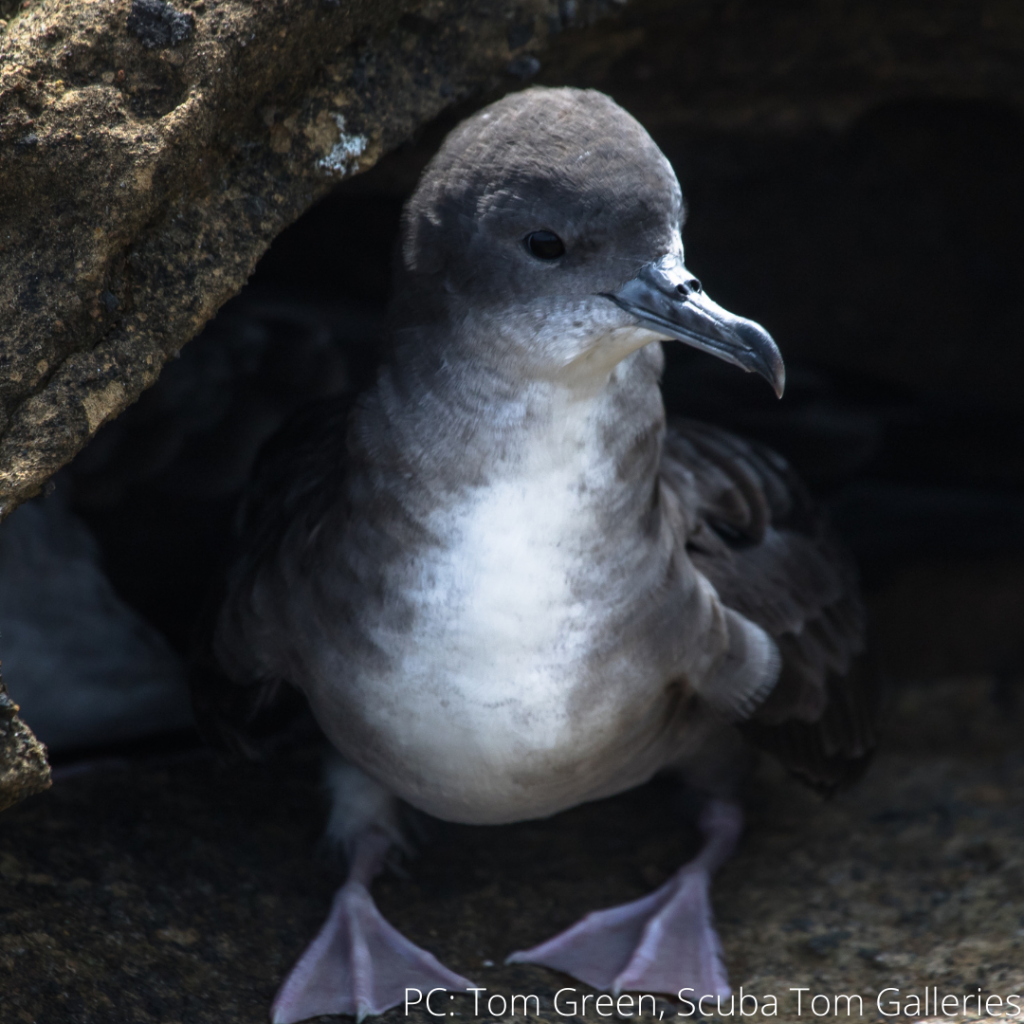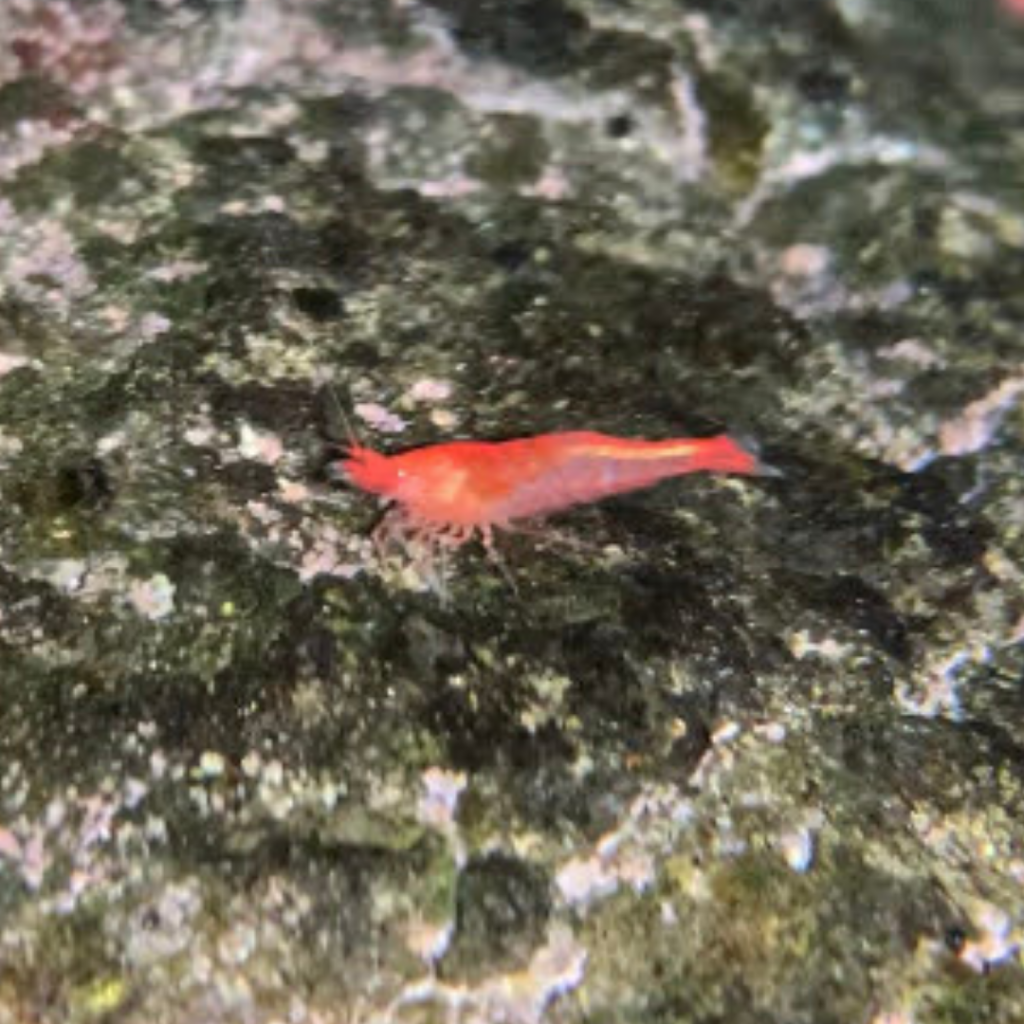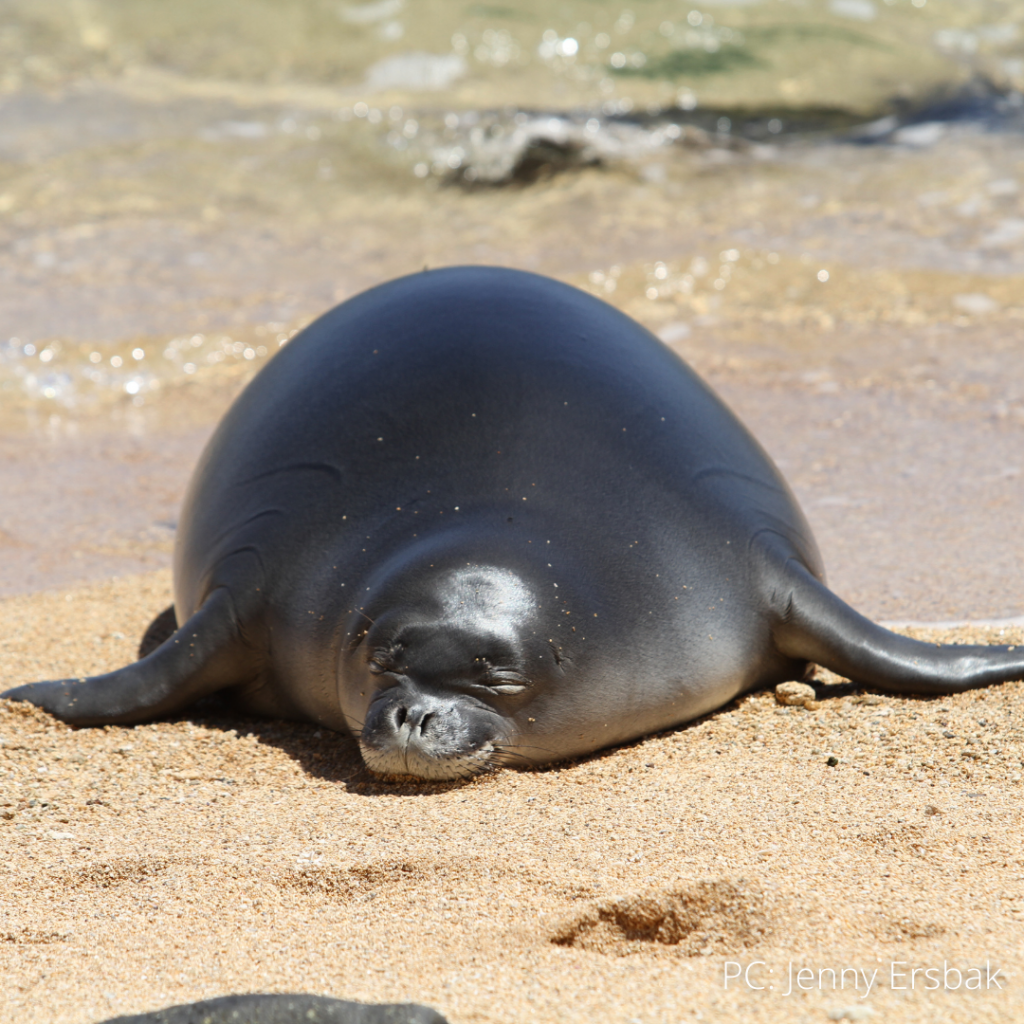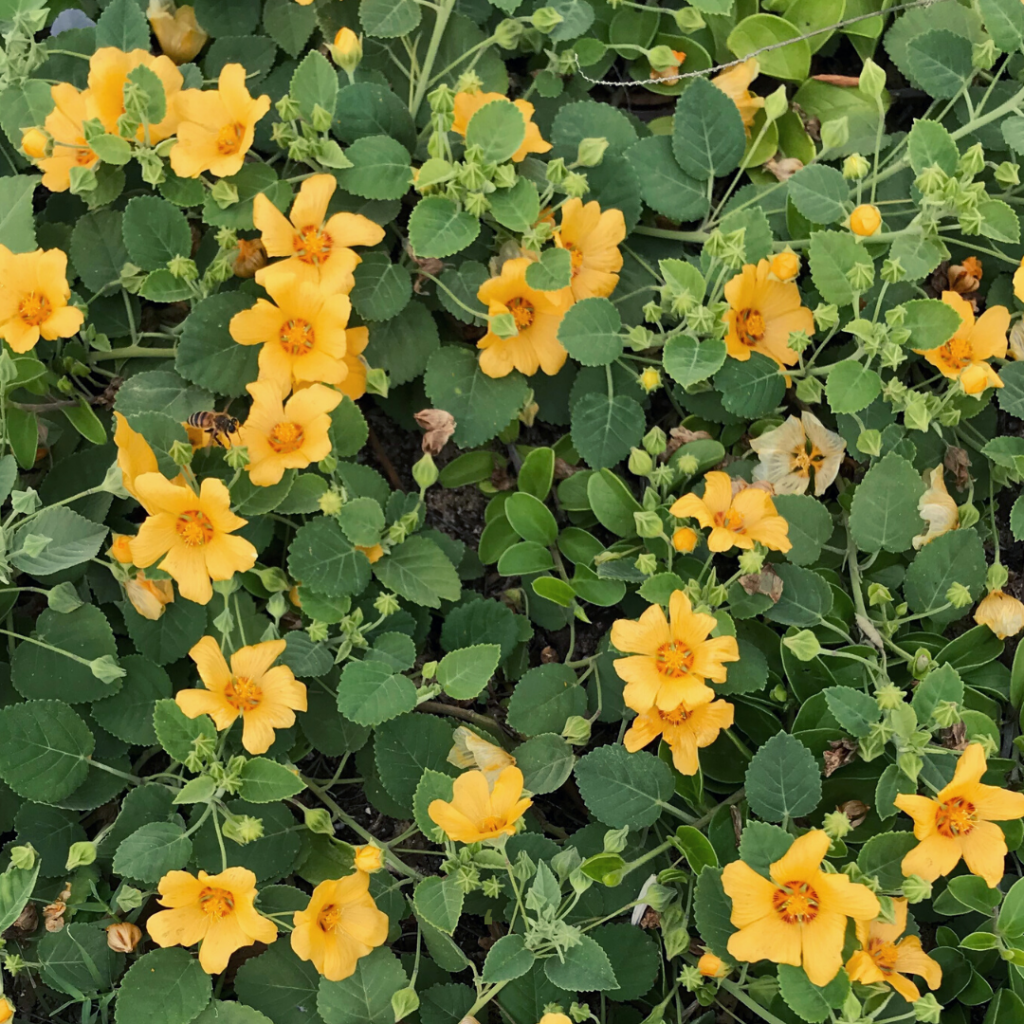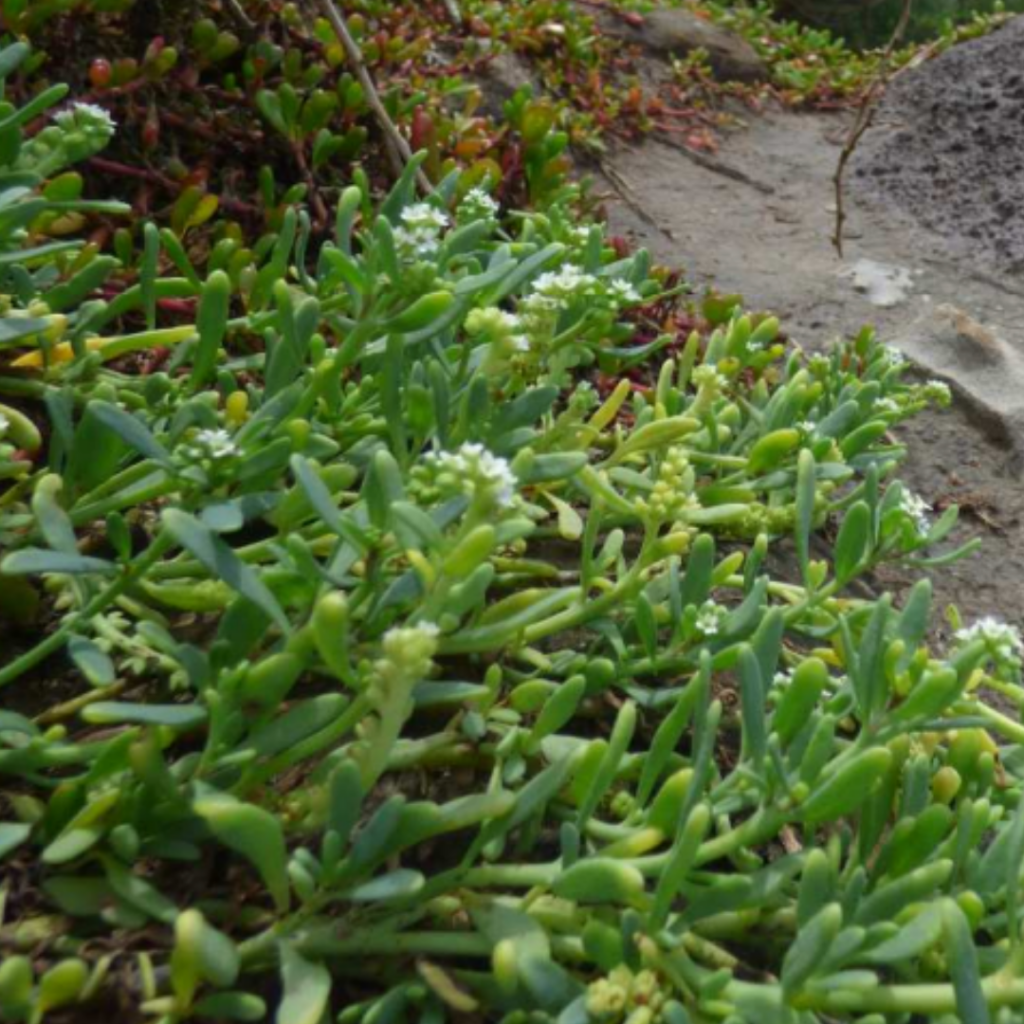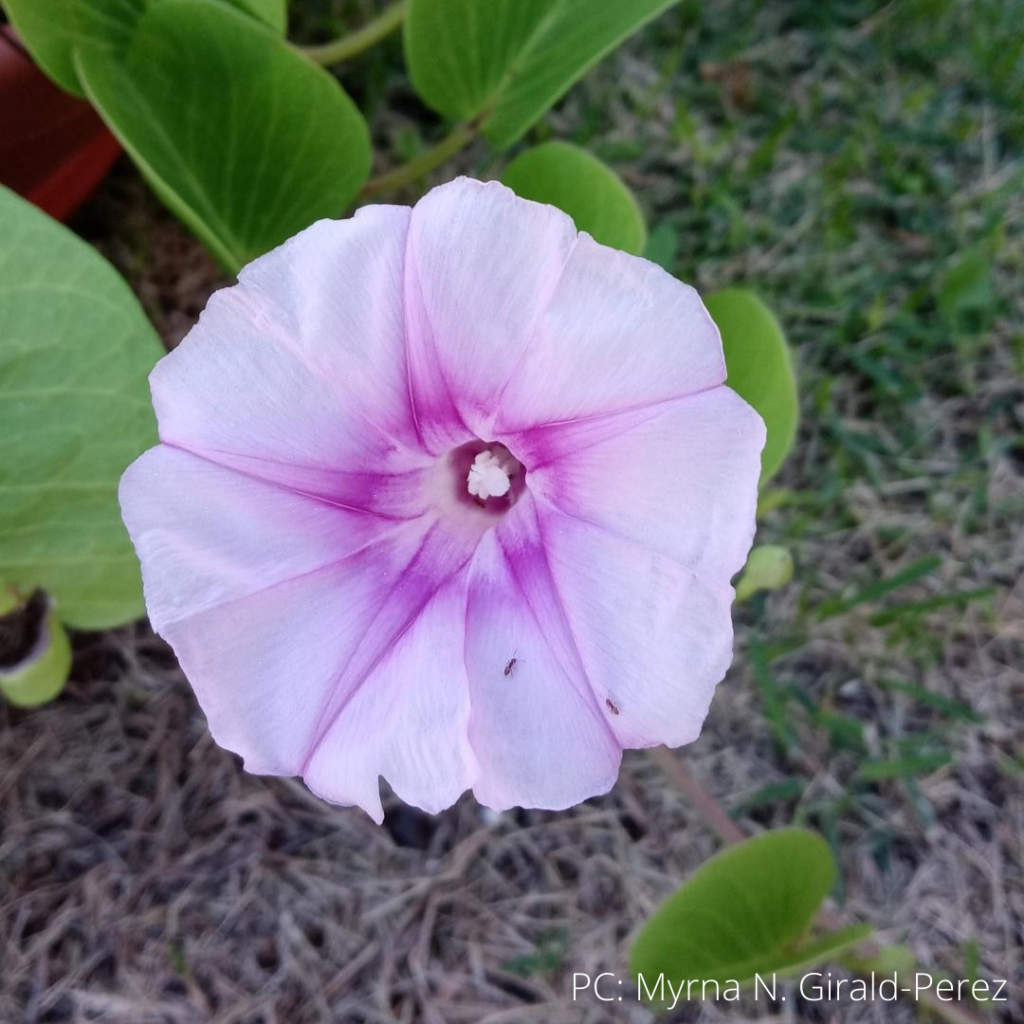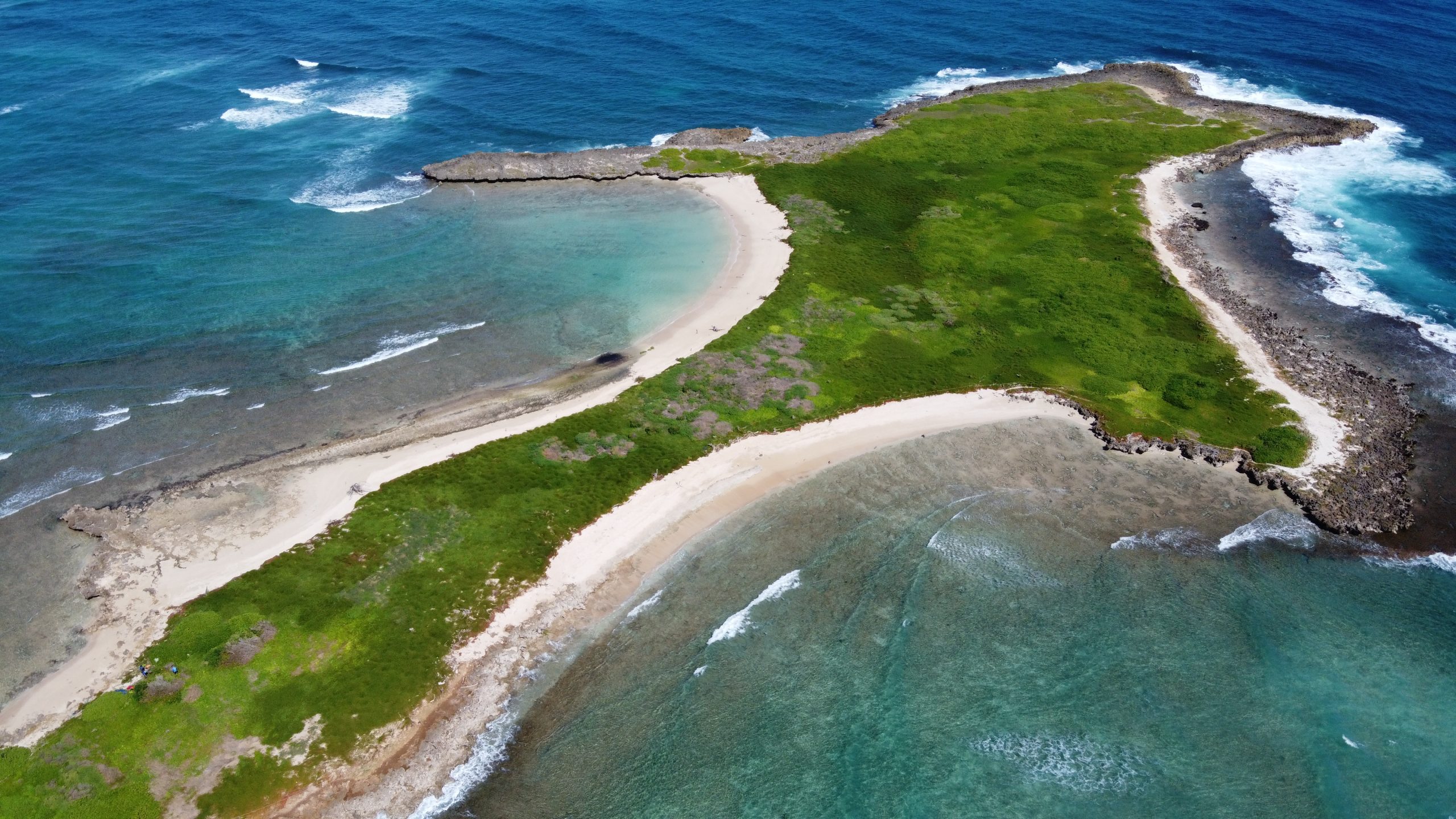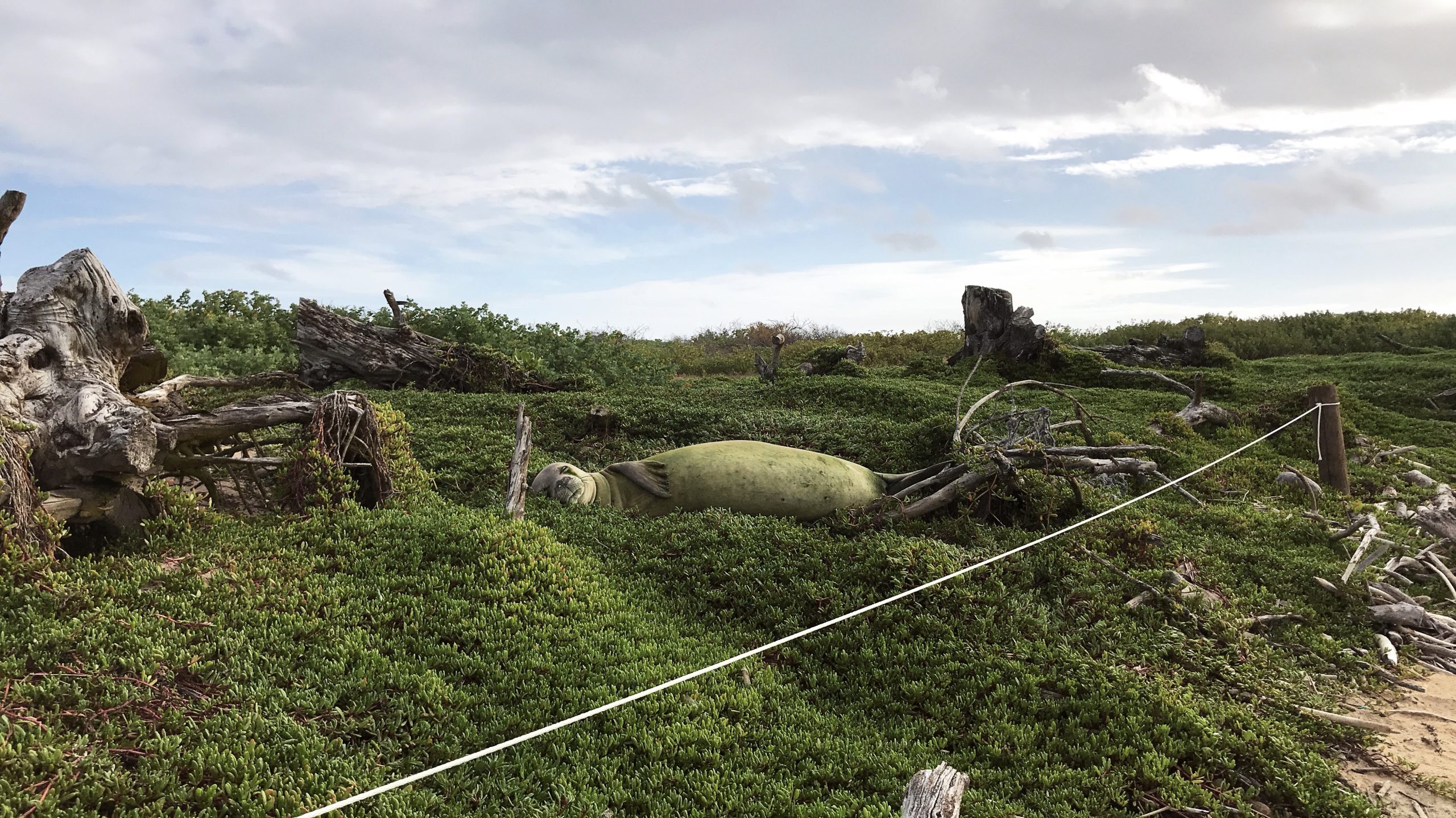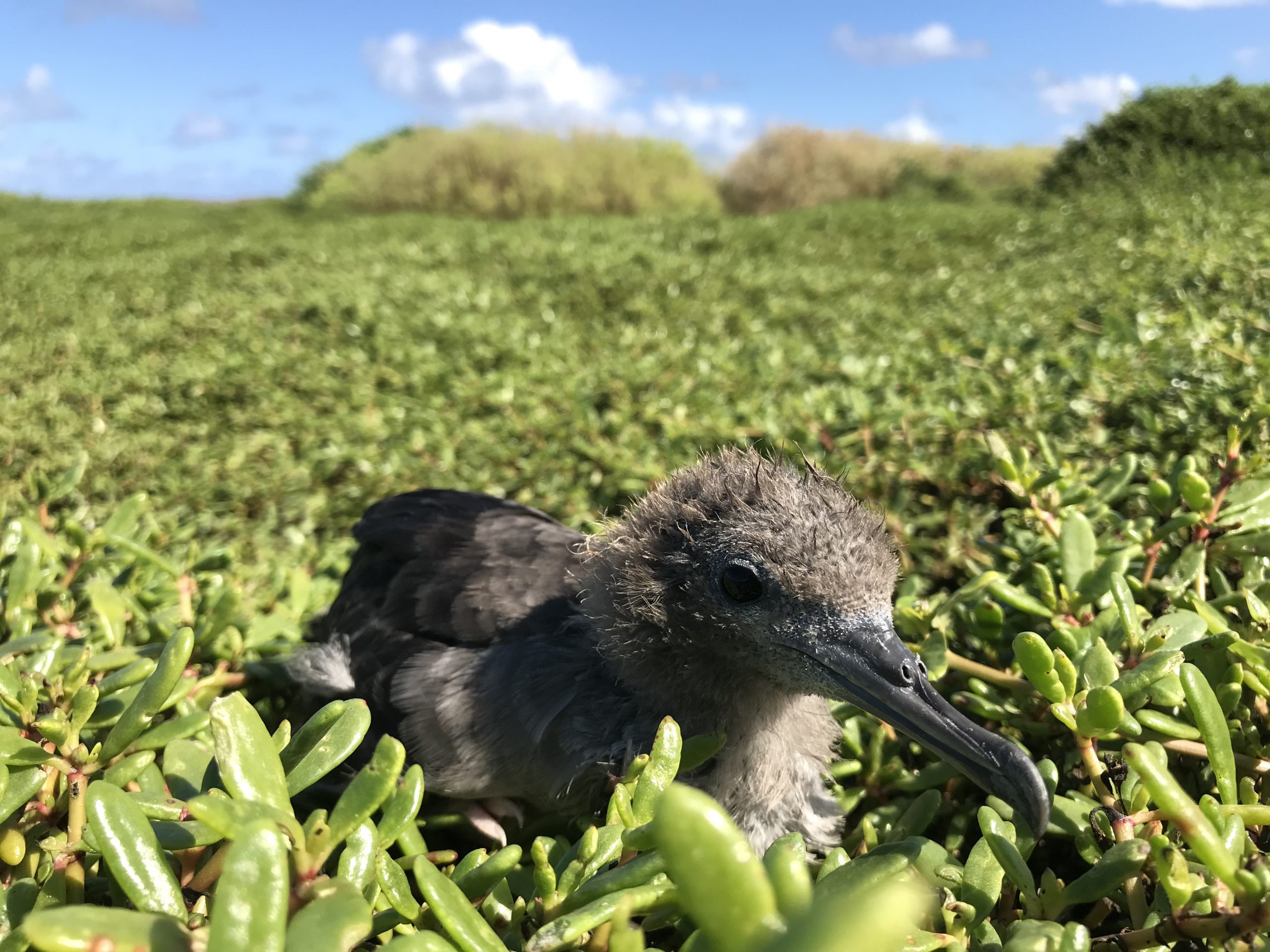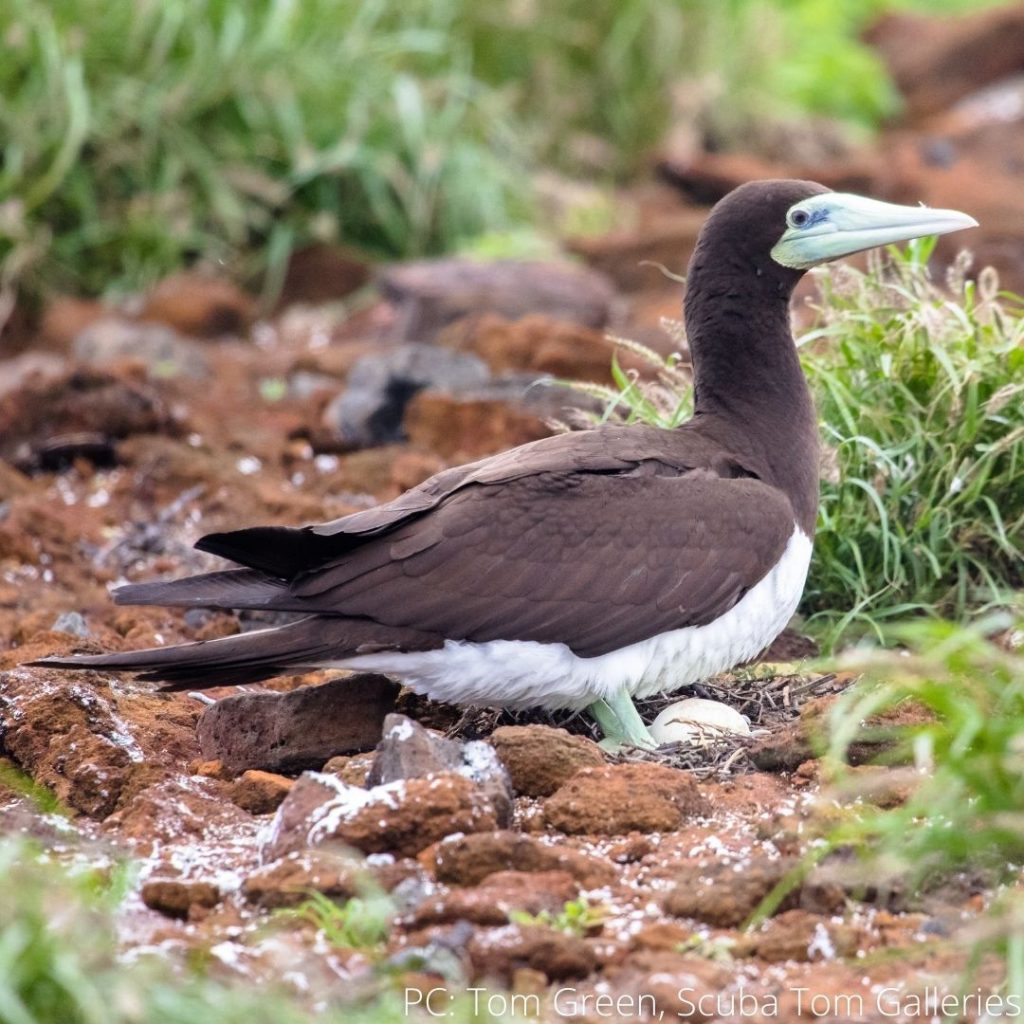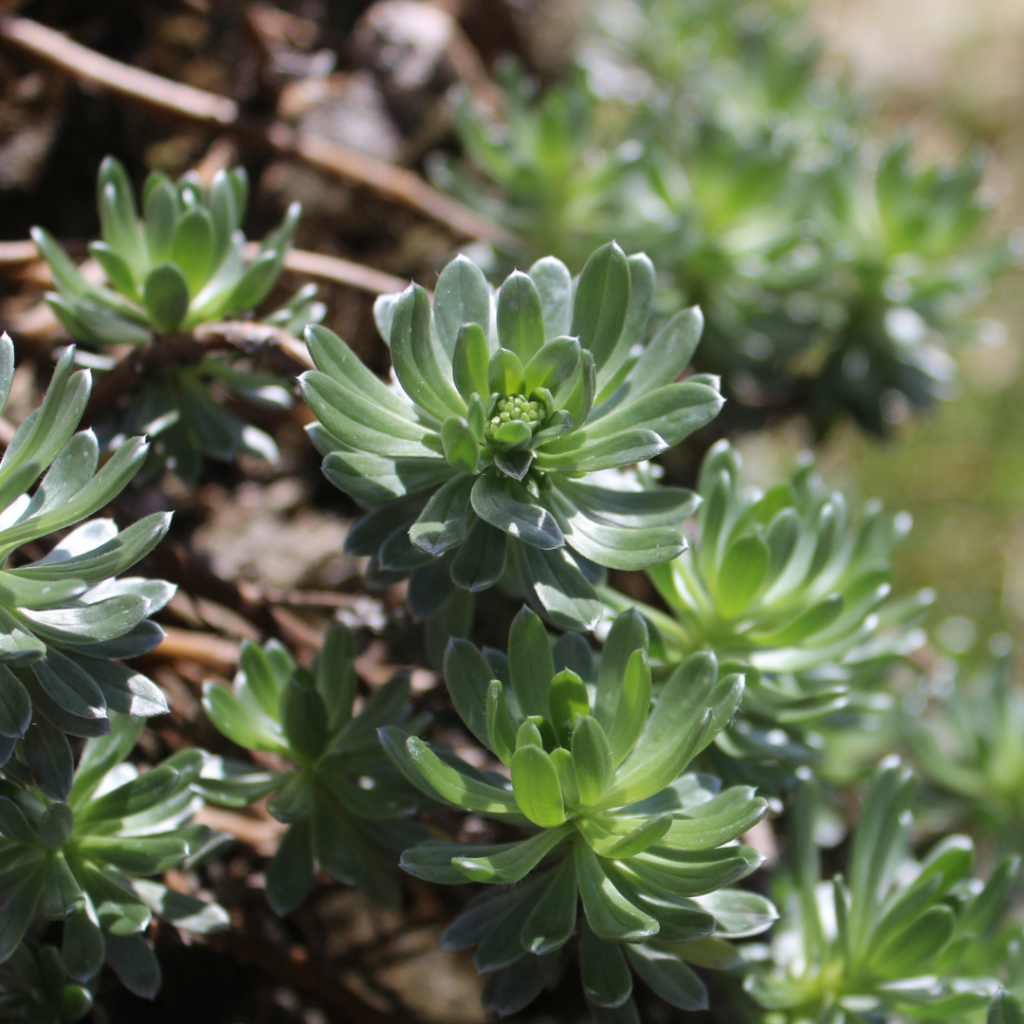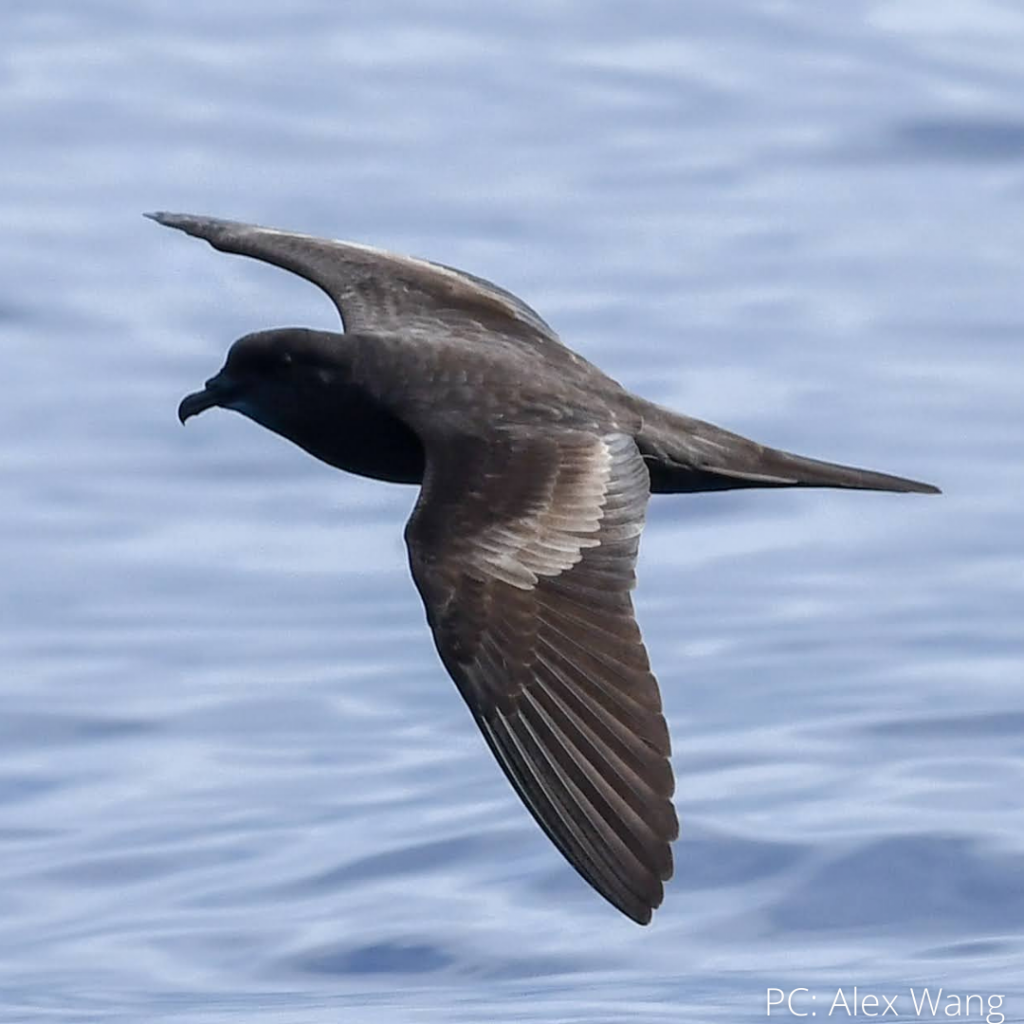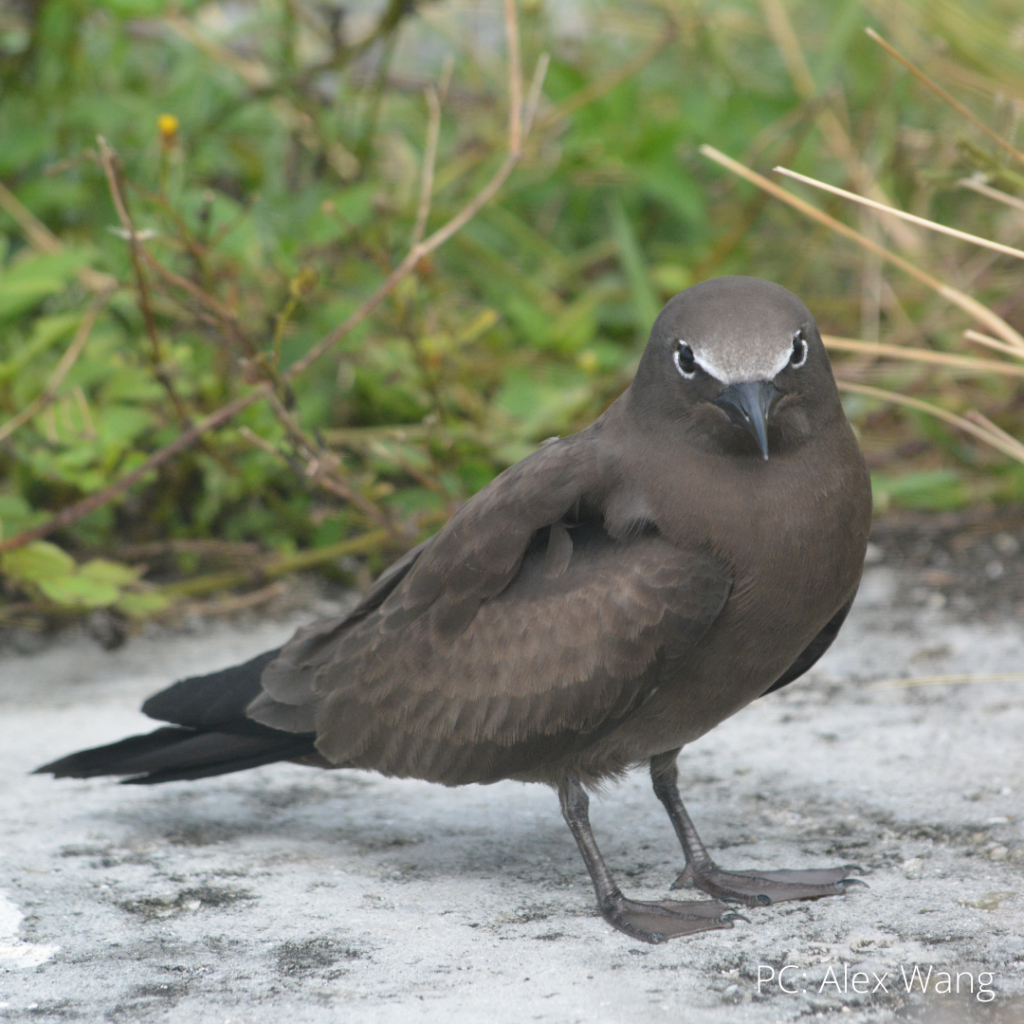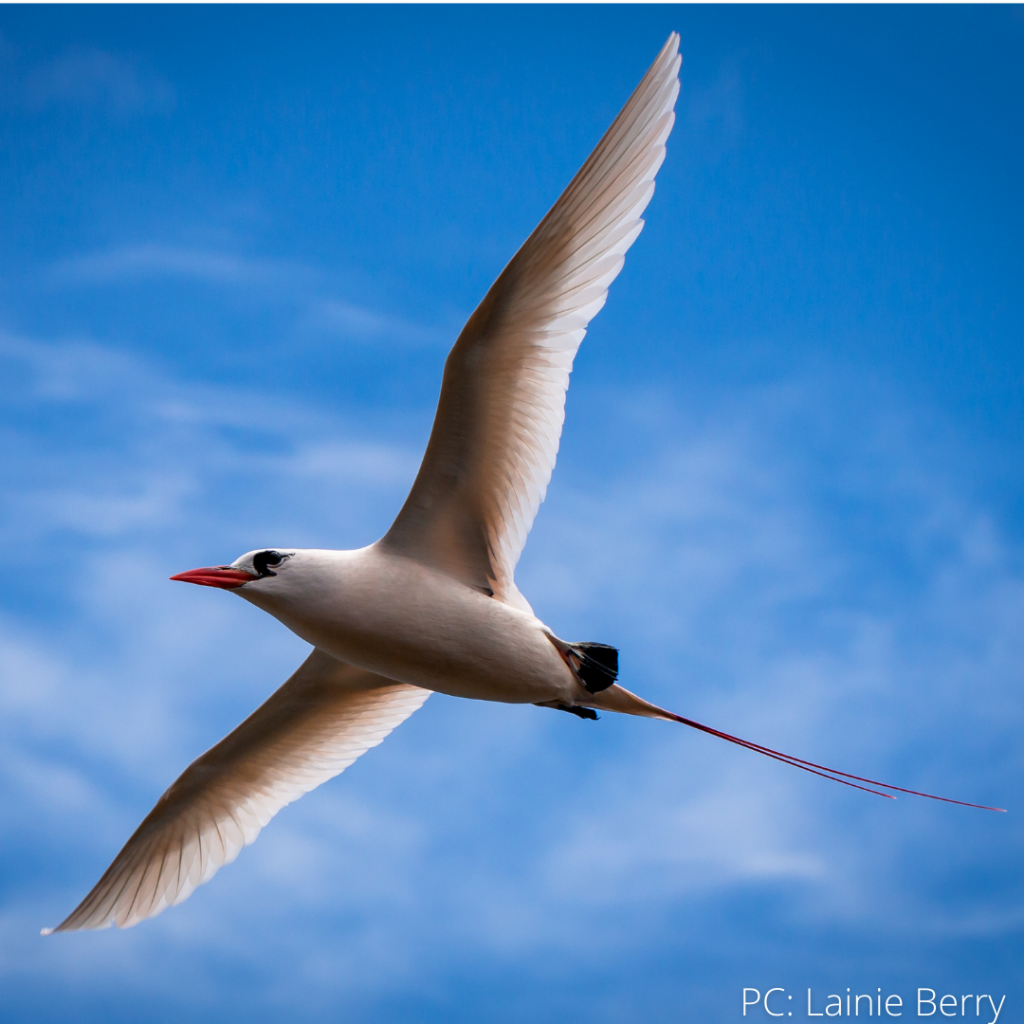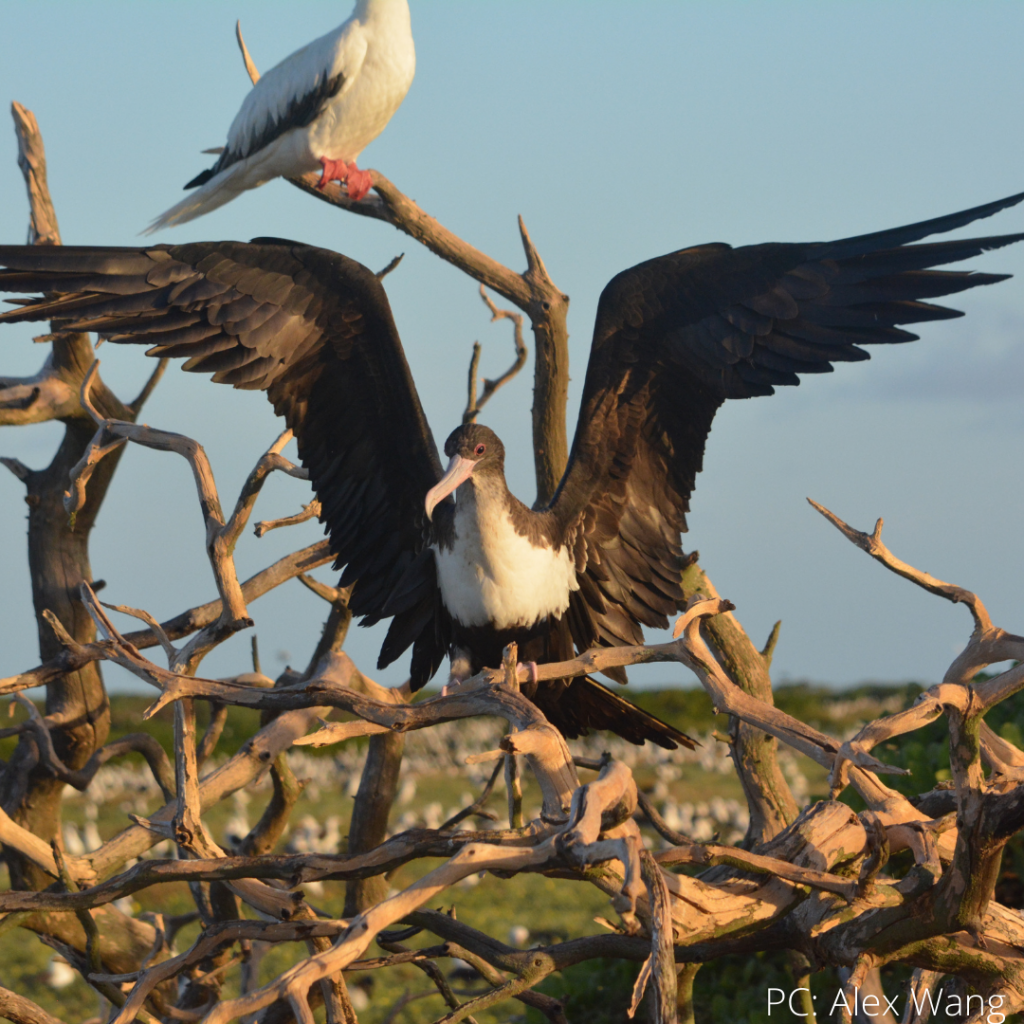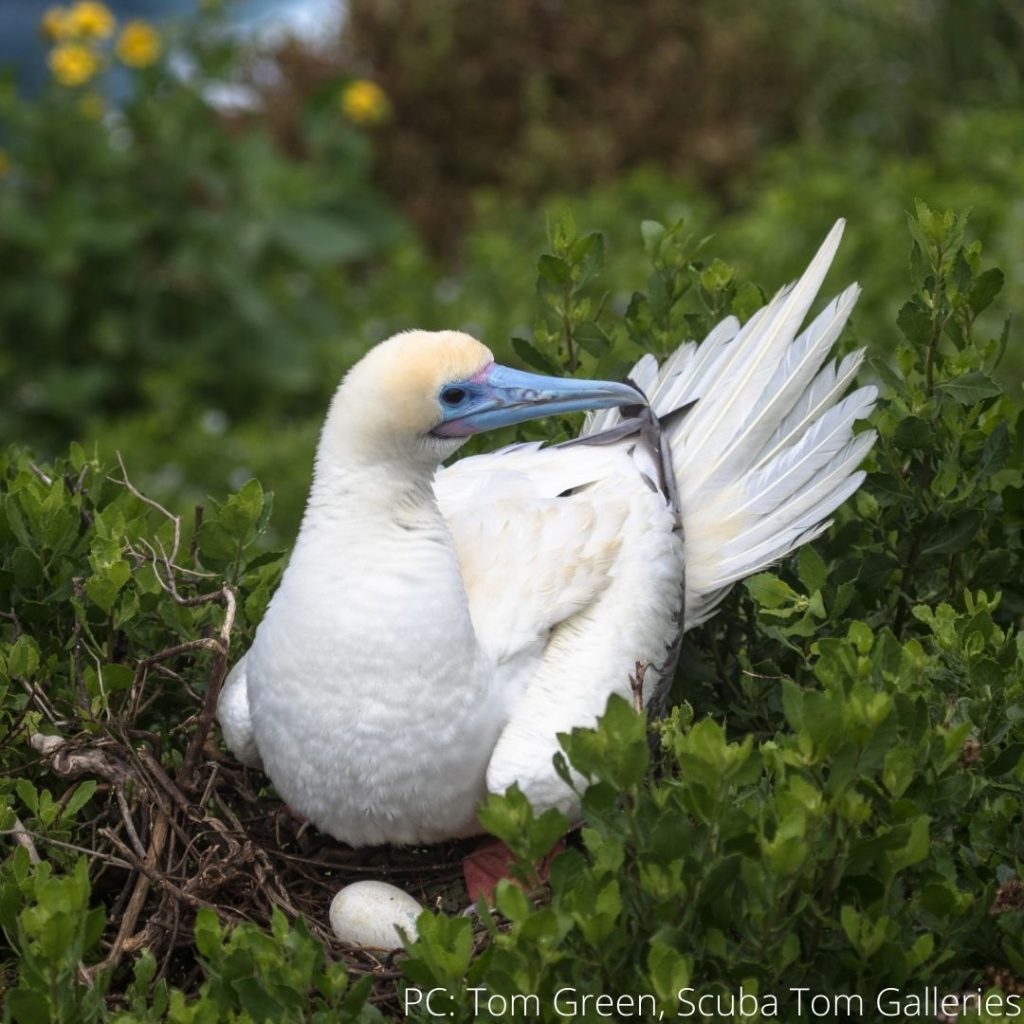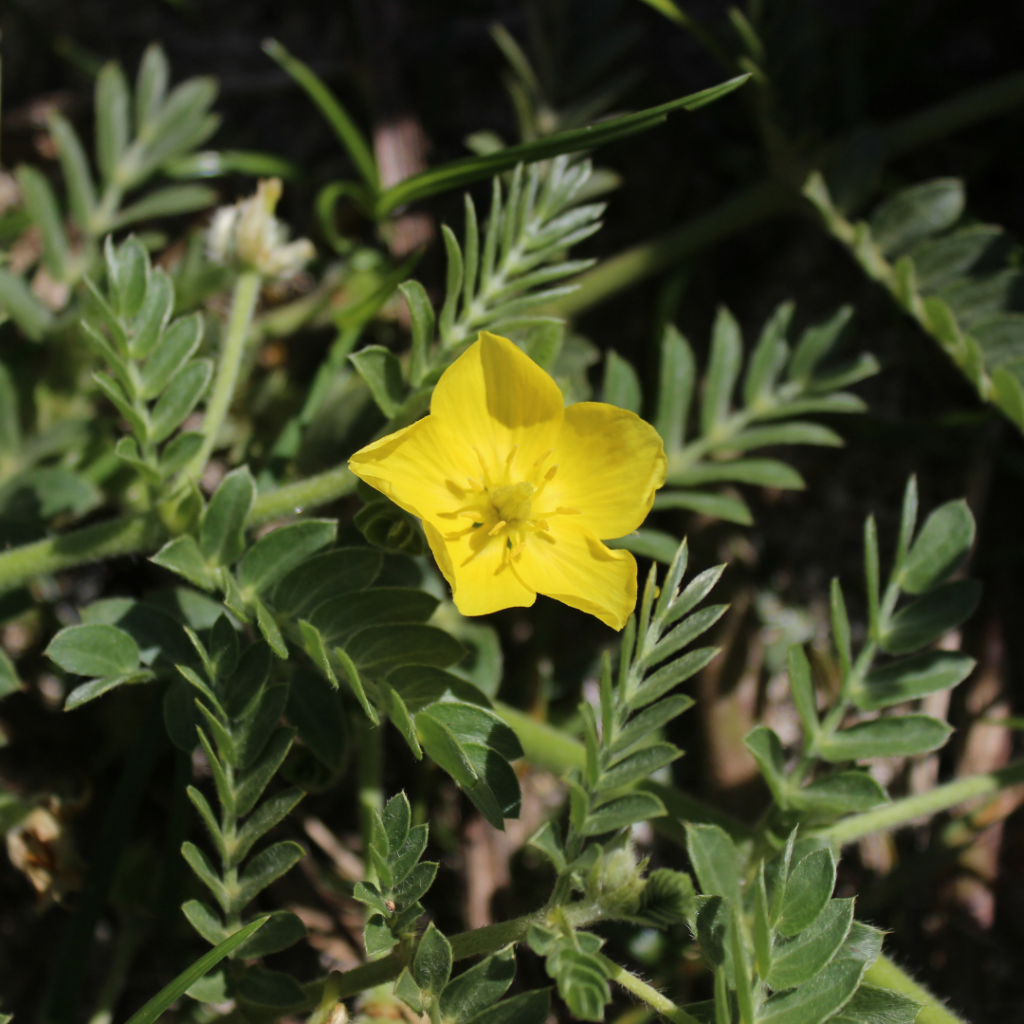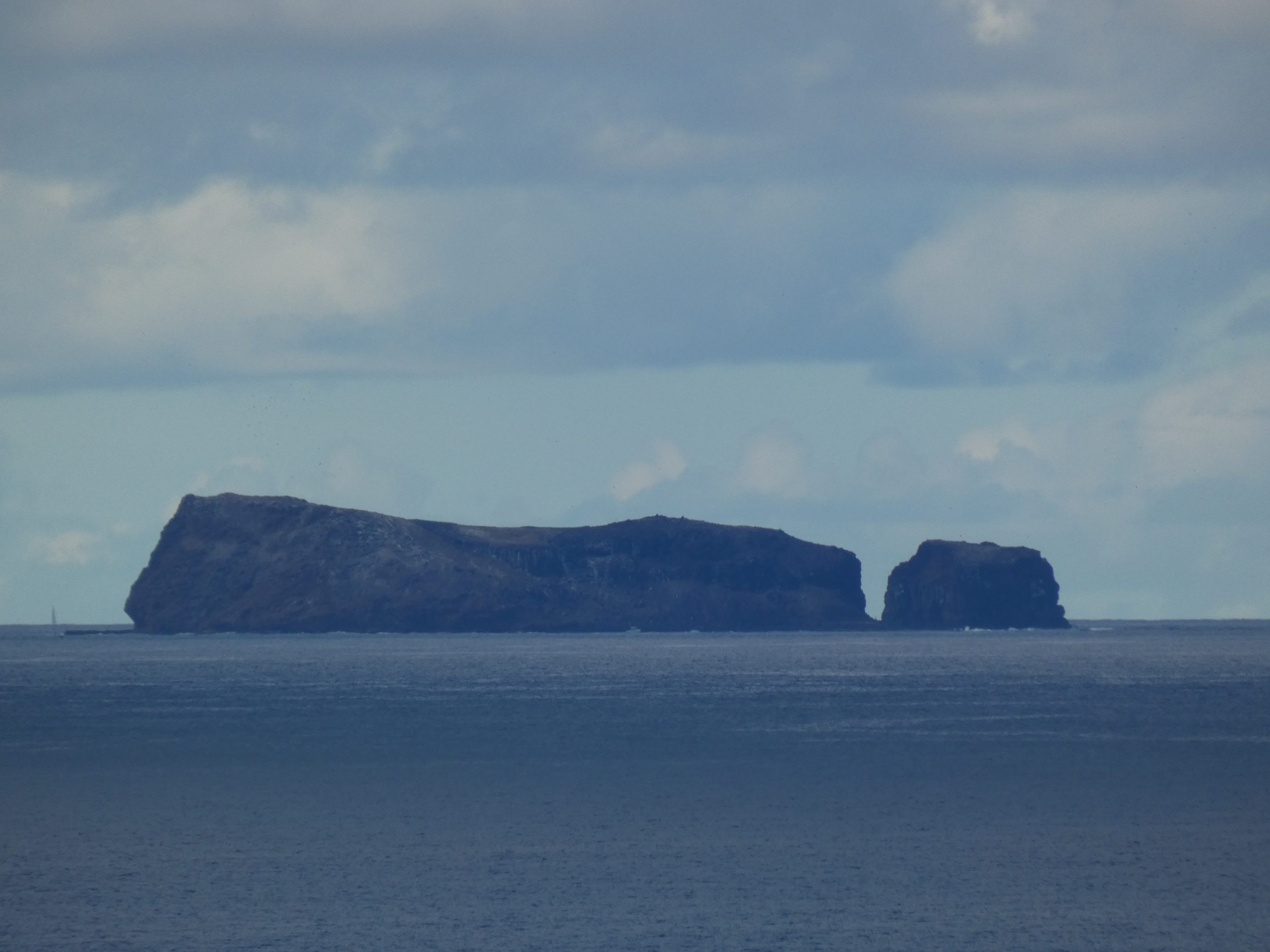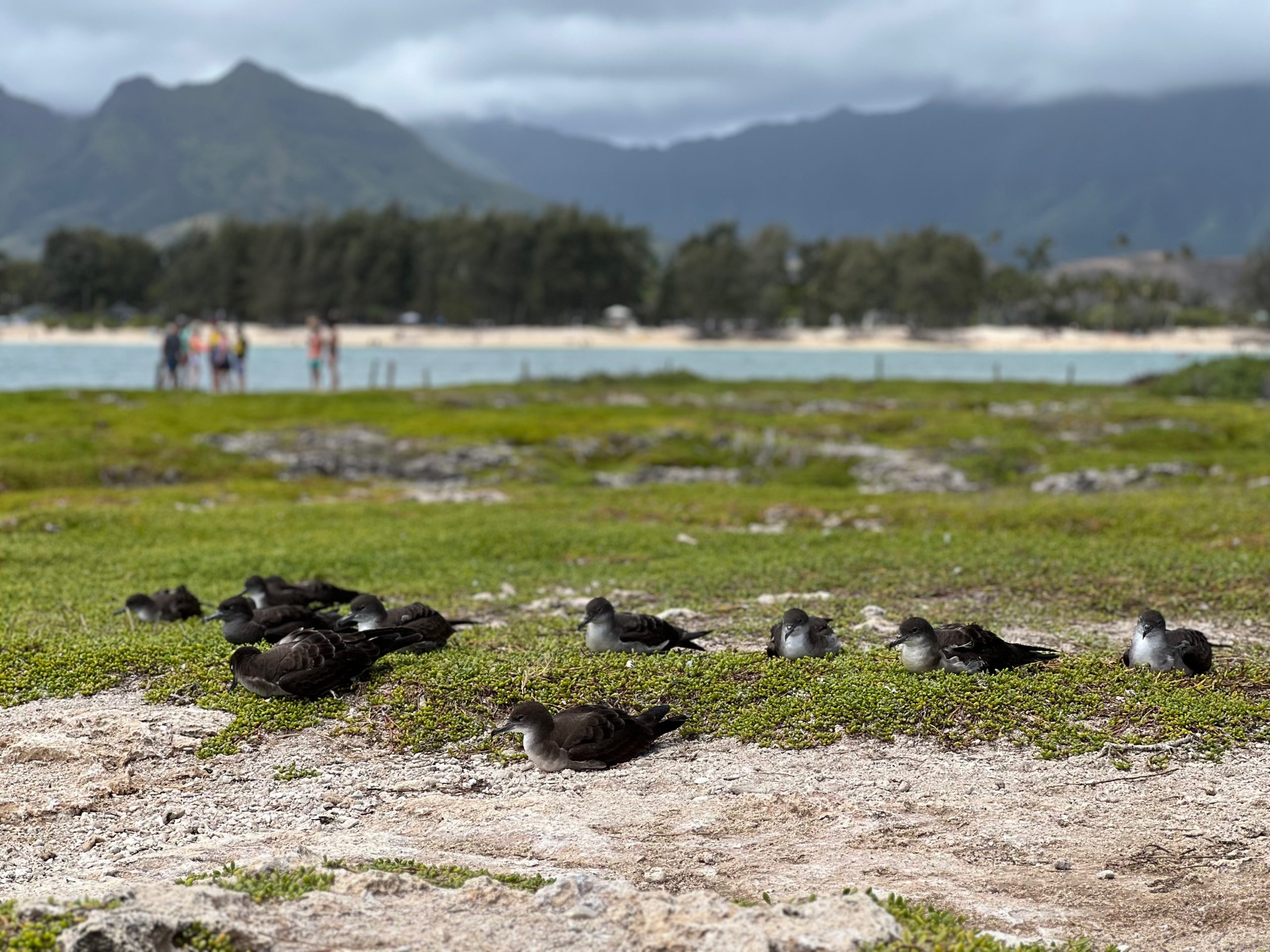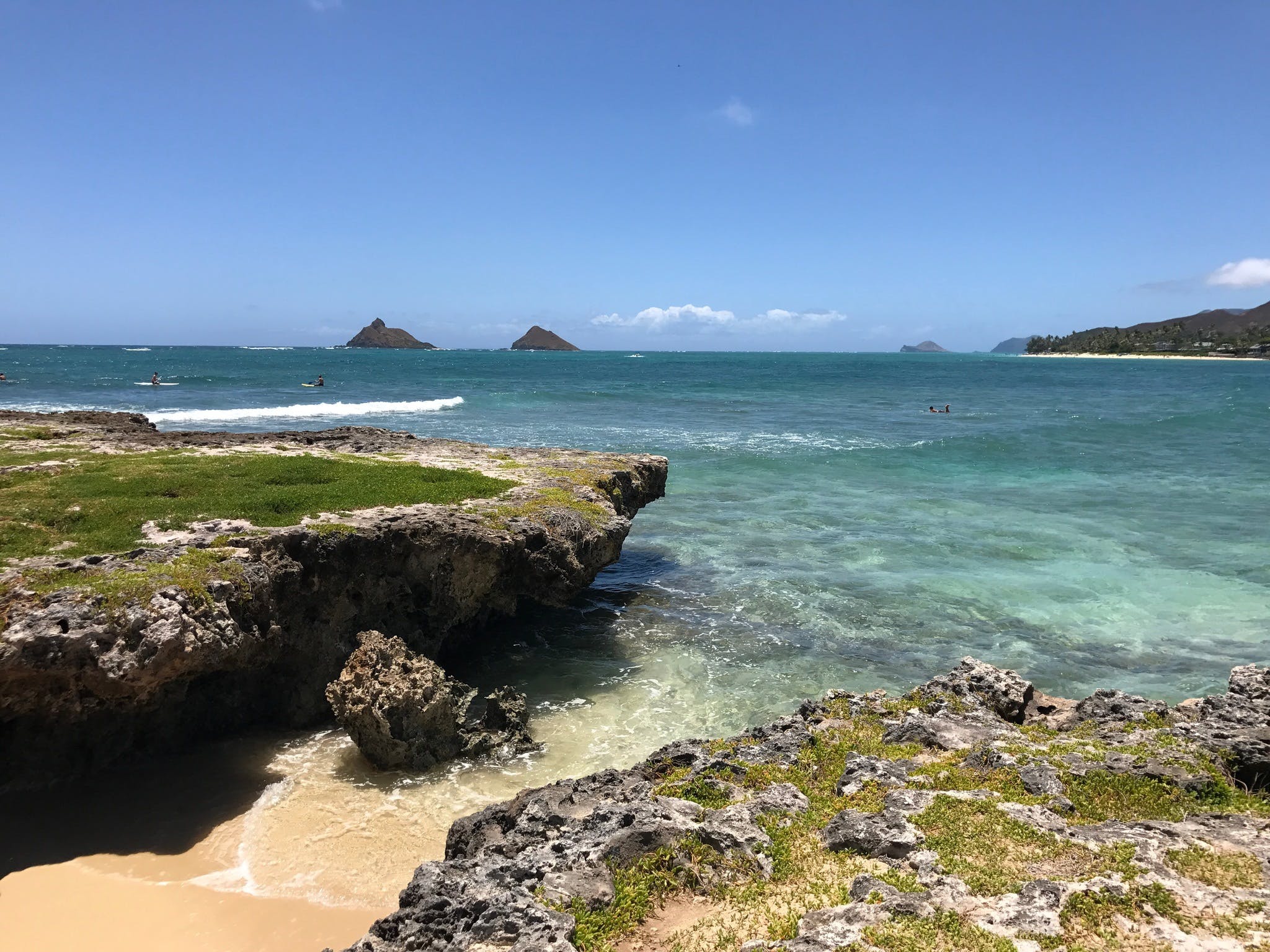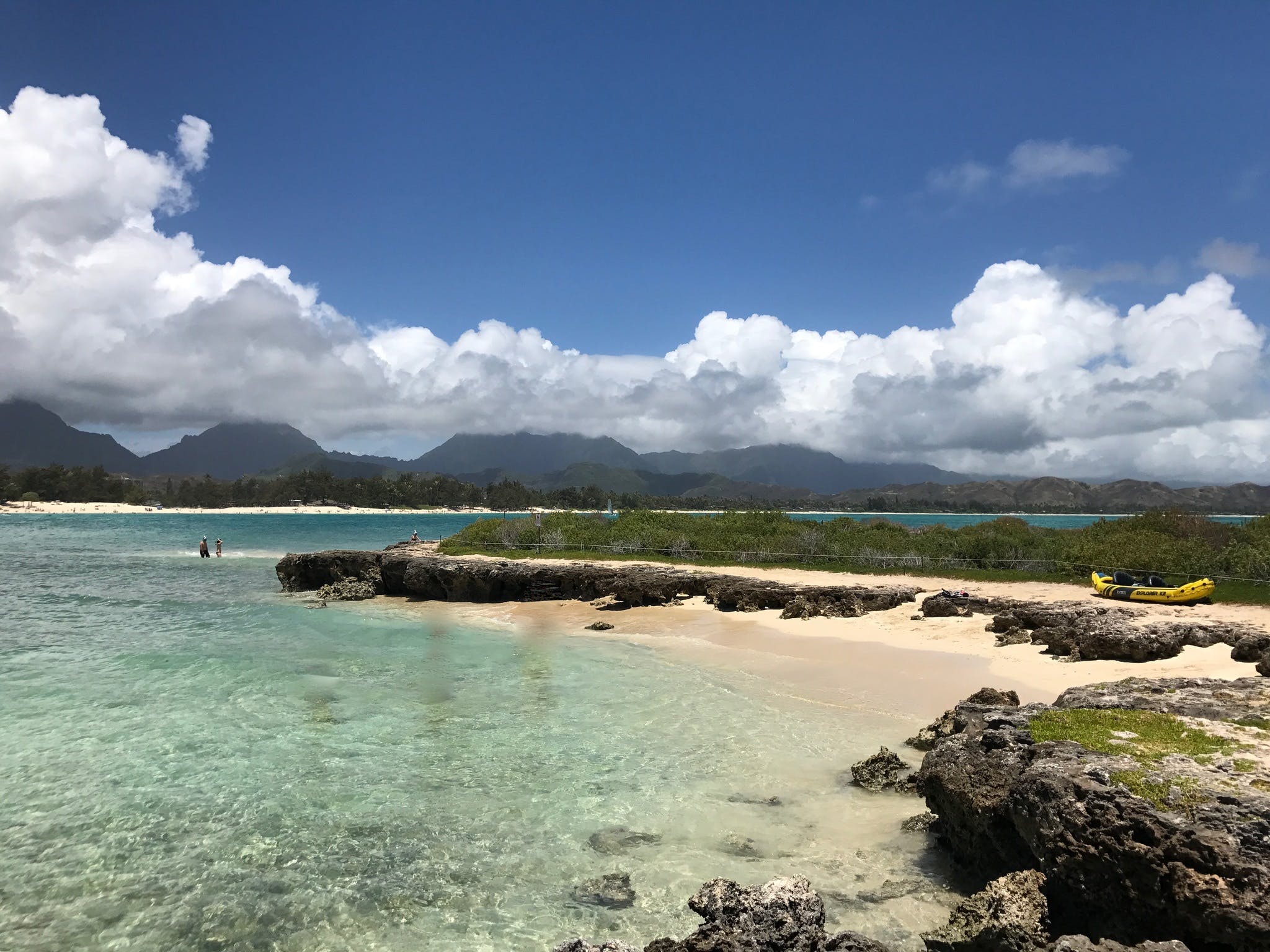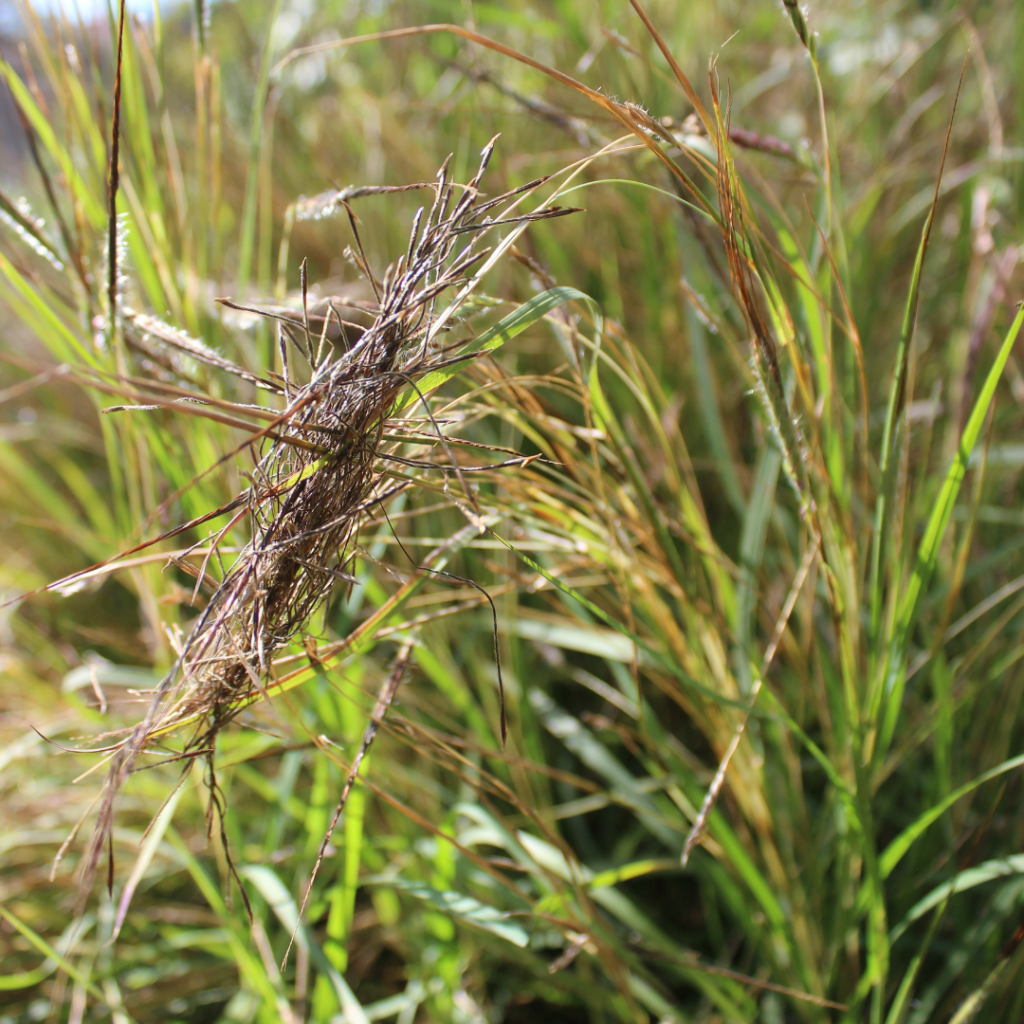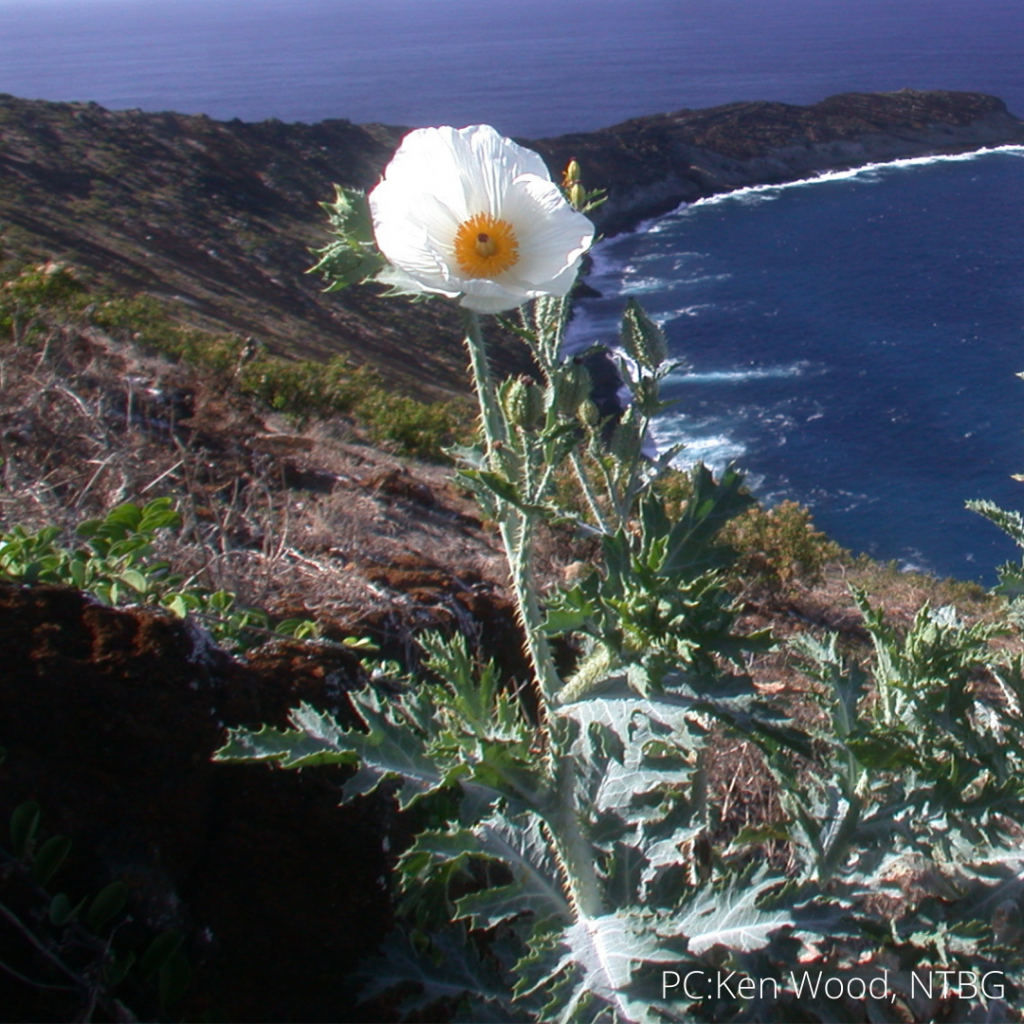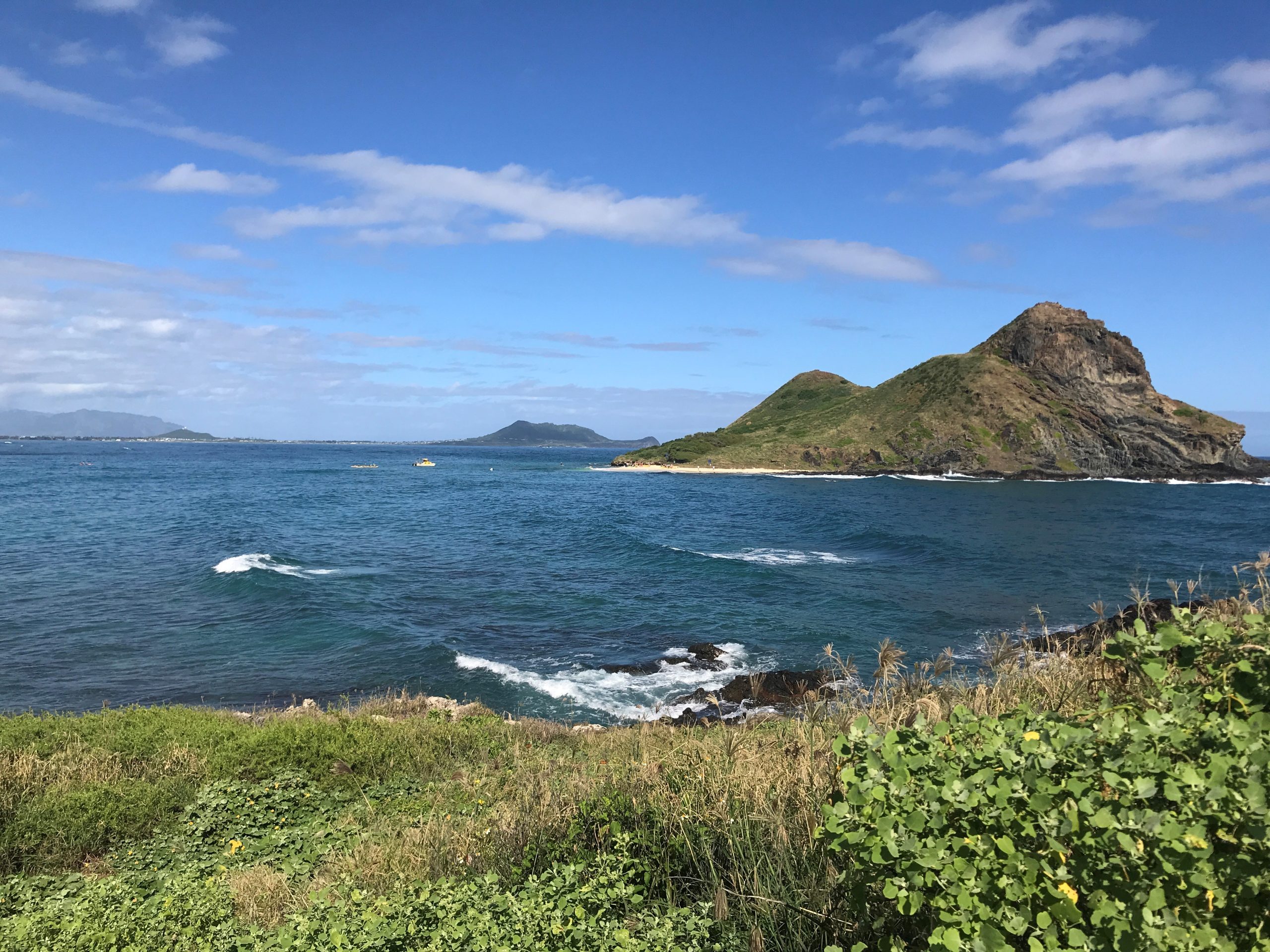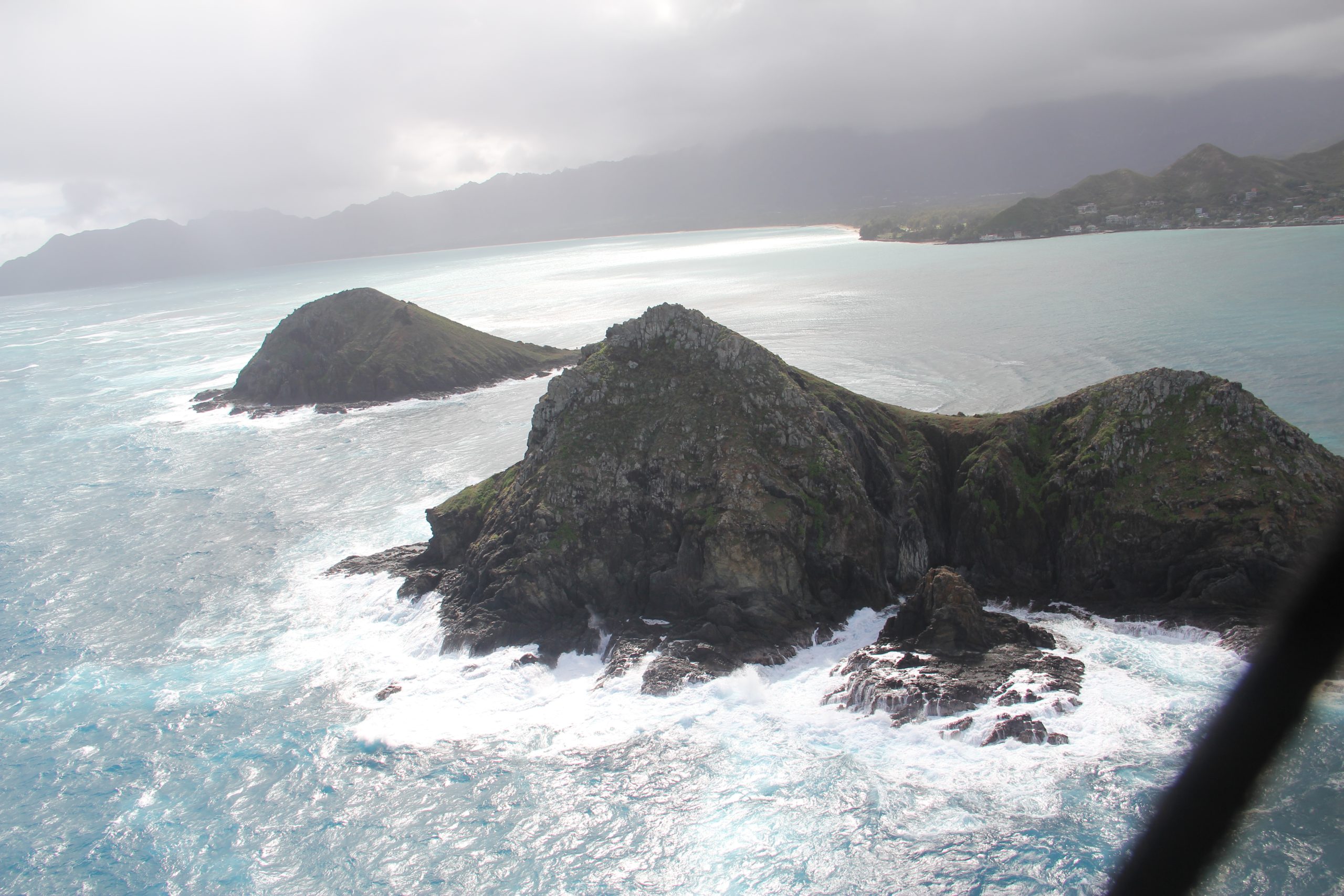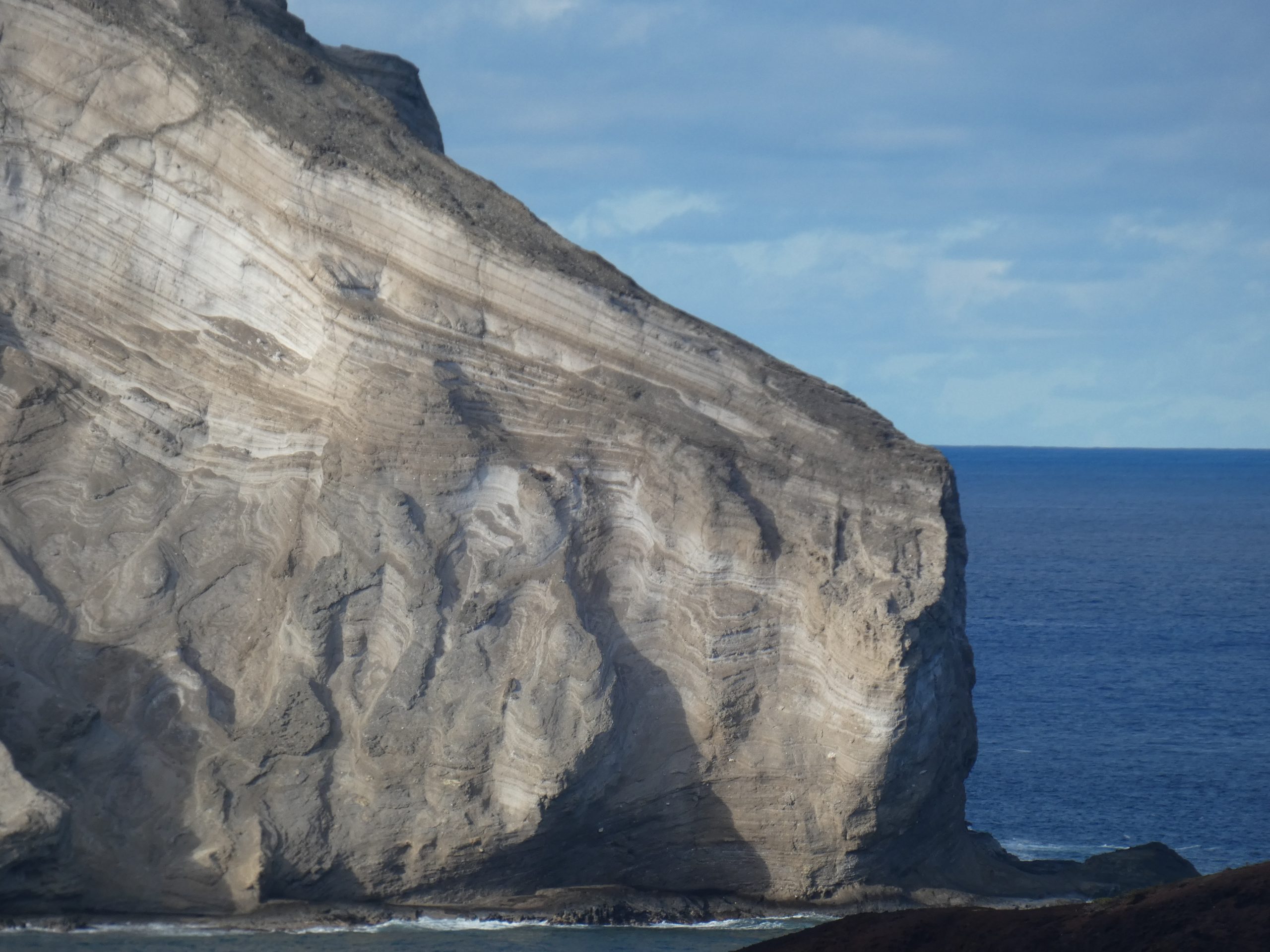Oʻahu Offshore Islet Seabird Sanctuaries

Table of Contents
- Kihewamoku State Wildlife Sanctuary
- Pulemoku Islet Seabird Sanctuary
- Mokūʻauia Islet Seabird Sanctuary
- Kukuihoʻolua Islet Seabird Sanctuary
- Kapapa Island Seabird Sanctuary
- Kekepa Islet Seabird Sanctuary
- Moku Manu Islets Seabird Sanctuary
- Mōkōlea Rock Islet Seabird Sanctuary
- Popoiʻa Island Seabird Sanctuary
- Mokulua Islets Seabird Sanctuary
- Mānana Island Seabird Sanctuary
- Kāohikaipu Islet Seabird Sanctuary
- Mokuālai Islet Seabird Sanctuary
Kihewamoku Islet Seabird Sanctuary
Description
Kihewamoku Islet Seabird Sanctuary is a small, rocky islet with no vegetation that is closed to the public. This is not a typical home for seabird and is very dangerous to access.
Activities
None.
Permits & Rules
- This sanctuary is CLOSED, per administrative rules Chapter 126 (Wildlife Sanctuaries).
- Commercial activities are prohibited.
- Other activities (like scientific research, conservation management, or subsistence, traditional, and customary practices by Native Hawaiians consistent with the long-term preservation of the wildlife sanctuary resources) may be possible with a permit. Individuals interested in permits should review the detailed information on our Permits & Guidelines page and contact their local DOFAW office.
Some Native Animals
Animal information for our DOFAW-managed area will be coming soon.
Pulemoku State Wildlife Sanctuary
Description
Pulemoku islet is located in Mālaekahana Bay, just south of Mokūʻauia islet. It is a small calcareous islet with no vegetation, approxiametely 1 acres in size and reaches a height of about 10 – 15 ft. Seabird nesting is uncommon on this islet. Pulemoku is closed to the public.
Activities
None.
Permits & Rules
- This sanctuary is CLOSED, per administrative rules Chapter 126 (Wildlife Sanctuaries).
- Commercial activities are prohibited.
- Other activities (like scientific research, conservation management, or subsistence, traditional, and customary practices by Native Hawaiians consistent with the long-term preservation of the wildlife sanctuary resources) may be possible with a permit. Individuals interested in permits should review the detailed information on our Permits & Guidelines page and contact their local DOFAW office.
Some Native Animals
Animal information for our DOFAW-managed area will be coming soon.
Mokuʻauʻia Islet Seabird Sanctuary
Description
Mokūʻauia Islet Seabird Sanctuary, also know as Goat Island, is a medium sized offshore islet that is 12.5 acres. It is located in Lāʻie Bay, Oʻahu, just offshore form Mālaekehana Beach Park. ʻUaʻu Kani or Wedge-tailed shearwaters and ʻopaeʻula are often found on the islet.
Activities
Birdwatching, swimming.
Permits & Rules
- This sanctuary is RESTRICTED, per administrative rules Chapter 126 (Wildlife Sanctuaries). Access is restricted to areas below the high water mark. The islet is closed from sunset to sunrise. No fires, dogs, camping, tents, tarps, or other structures are allowed at any time.
- Commercial activities may be possible with a permit. Contact the Oʻahu DOFAW office to discuss.
- Other activities (like scientific research, conservation management, or subsistence, traditional, and customary practices by Native Hawaiians consistent with the long-term preservation of the wildlife sanctuary resources) may be possible with a permit. Individuals interested in permits should review the detailed information on our Permits & Guidelines page and contact their local DOFAW office.
Some Native Plants & Animals
These are examples of native species associated with this site. This is not intended to be a comprehensive species inventory.
|
|
Hawaiian Monk Seal (Monachus schauinslandi) |
ʻĀkulikuli (Sesuvium portulacastrum) |
|
|
ʻIlima (Sida fallax) |
Naupaka kahakai (Scaevola taccada) |
Nena (Heliotropium curassavicum) |
Pōhuehue (Ipomoea pes-caprae subsp. brasiliense) |
Photos
Kukuihoʻolua Islet Seabird Sanctuary
Description
Kukuihoʻolua islet is located in Lāʻie Bay, just offshore from Lāʻie Point. The calcareous islet is about 2 acres in size and reaches a height of about 20 ft. There is a prominent arch in the center of the islet.
Common seabird species can be seen on this islet, though they regularly do not nest here. This islet is closed to the public.
Activities
None.
Permits & Rules
- This sanctuary is CLOSED, per administrative rules Chapter 126 (Wildlife Sanctuaries).
- Commercial activities are prohibited.
- Other activities (like scientific research, conservation management, or subsistence, traditional, and customary practices by Native Hawaiians consistent with the long-term preservation of the wildlife sanctuary resources) may be possible with a permit. Individuals interested in permits should review the detailed information on our Permits & Guidelines page and contact their local DOFAW office.
Some Native Plants & Animals
These are examples of native species associated with this site. This is not intended to be a comprehensive species inventory.
|
ʻĀkulikuli (Sesuvium portulacastrum) |
Kapapa Island Seabird Sanctuary
Description
Kapapa is a small calcareous islet about 9.5 acres in size and reaches a height of 14 ft. Kapapa islet is located in Kāneʻohe Bay approximately 2 miles offshore in the south-central portion of the bay, north of Kekepa islet. The outer edges are sharp limestone and lithified dune outcrops with some sandy sections in the interior.
The islet is mostly made up of native species, especially near shore areas. ʻĀkulikuli (Sesuvium portulacastrum) and ʻakiʻaki (Sporobolus virginicus) are found closest to the ocean. There are also a few milo (Thespesia populnea), mostly near the ocean on the southwest side. There are healthy patches of alena (Boerhavia repens) throughout the islet, several hinahina (Heliotropium anomalum var. argenteum) patches on the southeast side near the coast, and large patches of ʻakiʻaki (Sporobolus virginicus), mostly near the margins. Scattered naupaka (Scaevola taccada) patches were observed over most of the islet. Central areas were mostly made up of ʻilima (Sida fallax), alena (Boerhavia repens) and Pāʻū-o-Hʻiiaka (Jacquemontia ovalifolia subsp. sandwicensis). On the south shore, there are some small patches of koali ʻawa (Ipomoea indica) and kaunaʻoa (Cuscuta sandwichiana). ʻIhi (Portulaca lutea) can be seen in some coastal areas. A few areas of non-native vegetation exists, such as near the landing, along the south shore, and in the central area. Bermuda grass (Cynodon dactylon) lawns were found just above the beach and along the south shore near the landing area. There was also some khaki weed (Alternanthera pungens) and New Zealand spinach (Tetragonia tetragonioides). Ironwood (Casuarina glauca) dominates the central area. Near the fishing shrine where ironwood was cleared from is a patch of sourbush (Pluchea spp.) and Spanish needles (Bidens alba var. radiata). Near the coast are a few sea grape and beach heliotrope (Tournefortia argentea). There is a small patch of pickle weed (Batis maritima) on the south side near the coast.
Activities
Birdwatching, swimming.
Permits & Rules
- This sanctuary is RESTRICTED, per administrative rules Chapter 126 (Wildlife Sanctuaries). Access is restricted to areas below the high water mark. The islet is closed from sunset to sunrise. No fires, dogs, camping, tents, tarps, or other structures are allowed at any time.
- Commercial activities are prohibited.
- Other activities (like scientific research, conservation management, or subsistence, traditional, and customary practices by Native Hawaiians consistent with the long-term preservation of the wildlife sanctuary resources) may be possible with a permit. Individuals interested in permits should review the detailed information on our Permits & Guidelines page and contact their local DOFAW office.
Some Native Plants & Animals
These are examples of native species associated with this site. This is not intended to be a comprehensive species inventory.
|
Hawaiian Monk Seal (Monachus schauinslandi) |
ʻĀkulikuli (Sesuvium portulacastrum) |
Hinahina (Heliotropum anomalum) |
|
|
ʻIlima (Sida fallax) |
Pāʻū-o-Hiʻiaka (Jacquemontia ovalifolia) |
ʻIhi (Portulaca lutea) |
Naupaka kahakai (Scaevola taccada) |
Kekepa Islet Seabird Sanctuary
Description
Kekepa Islet Seabird Sanctuary, also known as Turtle Rock, is a 1.5 acres islet located in Kāneʻohe Bay. This lush islet provides a habitat for ʻou or Bulwer’s Petrel and ʻuaʻu kani or Wedge-tailed Shearwaters. This islet is closed to the public, but can be seen from most of Kāneʻohe’s beaches.
Activities
None.
Permits & Rules
- This sanctuary is CLOSED, per administrative rules Chapter 126 (Wildlife Sanctuaries).
- Commercial activities are prohibited.
- Other activities (like scientific research, conservation management, or subsistence, traditional, and customary practices by Native Hawaiians consistent with the long-term preservation of the wildlife sanctuary resources) may be possible with a permit. Individuals interested in permits should review the detailed information on our Permits & Guidelines page and contact their local DOFAW office.
Some Native Plants & Animals
These are examples of native species associated with this site. This is not intended to be a comprehensive species inventory.
|
ʻŌhelo kai (Lycium sandwicense) |
ʻIlima (Sida fallax) |
||
|
ʻĀkulikuli (Sesuvium portulacastrum) |
ʻIhi (Portulaca lutea) |
Hinahina (Heliotropum anomalum) |
Maiapilo (Capparis sandwichiana) |
Moku Manu Islets Seabird Sanctuary
Description
Moku Manu Islets Seabird Sanctuary consists of two islets that totals 16.6 acres located off of Mōkapu Peninsula. It has a relatively flat top, averaging about 165 feet in height but running up to 202 feet. The cliffs of Moku Manu drop directly into the sea around more than half of the island. Moku Manu is difficult to access and is closed to the public due to its status as a Seabird Sanctuary.
Moku Manu is home to the most diverse and one of the densest seabird colonies in the Main Hawaiian Islands. Seabird species such as Wedge-tailed Shearwaters (ʻUʻau Kani), Black Noddy (Noio), Brown Noddy (Noio kōhā), Bulwer’s Petrel (ʻOu), Red-tailed Tropicbirds (Koaʻe ʻula), Sooty Terns (‘Ewa ʻEwa), Great Frigatebird (ʻIwa), Christmas Shearwater, Grey-backed Tern (Pākalakala), various Booby species, and various common shorebird species.
Activities
None.
Permits & Rules
- This sanctuary is CLOSED, per administrative rules Chapter 126 (Wildlife Sanctuaries).
- Commercial activities are prohibited.
- Other activities (like scientific research, conservation management, or subsistence, traditional, and customary practices by Native Hawaiians consistent with the long-term preservation of the wildlife sanctuary resources) may be possible with a permit. Individuals interested in permits should review the detailed information on our Permits & Guidelines page and contact their local DOFAW office.
Some Native Plants & Animals
These are examples of native species associated with this site. This is not intended to be a comprehensive species inventory.
|
ʻĀkulikuli (Sesuvium portulacastrum) |
Nohu (Tribulus cistoides) |
|
|
Photos
Mōkōlea (Mokulea) Rock Islet Seabird Sanctuary
Description
Mōkōlea is the traditional name of the Mokulea Rock Islet Seabird Sanctuary is 0.35 acres of rock habitat and is home to seabirds that like to nest in crevices. Seabirds species such as the Brown Noddy (Noio Kōha), Black Noddy (Noio), and Bulwer’s Petrel (ʻOu). This islet is closed to the public, but is viewable from the Marine Corps Base in Kāneʻohe Bay and from many beaches in Kailua. Note that though the traditional name of the islet is Mōkōlea, it is referred to as Mokulea in administrative rules and other official documents.
Activities
None.
Permits & Rules
- This sanctuary is CLOSED, per administrative rules Chapter 126 (Wildlife Sanctuaries).
- Commercial activities are prohibited.
- Other activities (like scientific research, conservation management, or subsistence, traditional, and customary practices by Native Hawaiians consistent with the long-term preservation of the wildlife sanctuary resources) may be possible with a permit. Individuals interested in permits should review the detailed information on our Permits & Guidelines page and contact their local DOFAW office.
Some Native Plants & Animals
These are examples of native species associated with this site. This is not intended to be a comprehensive species inventory.
|
ʻŌhelo kai (Lycium sandwicense) |
Popoiʻa Islet Seabird Sanctuary
Description
Popoiʻa Seabird Sanctuary, also known as Flat Island, is 3.67 acres off the coast of Kailua Beach and Lanikai Beach. The ecosystem of the islet is vegetated coral which is utilized primarily by ʻuaʻu kani or Wedge-tailed shearwaters, ʻou or Bulwer’s Petrel, and pigeons. ‘Opae‘ula can also be spotted on this islet.
The islet has restricted public access: visitors are required to stay below the high water mark to avoid trampling seabird burrows. Please read the signs when visiting the island and do not enter the nesting area.
Management and monitoring of this islet is essential for the seabirds that inhabit it. Listed below are the management goals and objectives of this islet:
- Manage commercial and recreational activity on islet using signage, commercial permit system, outreach, and education to promote habitat and species protection.
- Remove invasive weeds, prevent non-native weeds from establishment. Replace removed weeds with native species.
- Survey and inventory of seabirds. Shearwater fledglings are counted each year in designated survey plots. Entire islet is counted to track number of fledged Bulwer’s Petrels.
- Protect nesting areas by placing rope barriers to establish boundaries for sensitive nesting areas.
Activities
Birdwatching, swimming, kayaking.
Permits & Rules
- This sanctuary is RESTRICTED, per administrative rules Chapter 126 (Wildlife Sanctuaries). Access is restricted to areas below the high water mark. The islet is closed from sunset to sunrise. No fires, dogs, camping, tents, tarps, or other structures are allowed at any time.
- Commercial activities may be possible with a permit. Contact the Oʻahu DOFAW office to discuss.
- Other activities (like scientific research, conservation management, or subsistence, traditional, and customary practices by Native Hawaiians consistent with the long-term preservation of the wildlife sanctuary resources) may be possible with a permit. Individuals interested in permits should review the detailed information on our Permits & Guidelines page and contact their local DOFAW office.
Some Native Plants & Animals
|
|
Hawaiian Monk Seal (Monachus schauinslandi) |
||
|
Maiapilo (Capparis sandwichiana) |
Hinahina (Heliotropum anomalum) |
ʻIhi (Portulaca lutea) |
ʻŌhelo kai (Lycium sandwicense) |
Photos
Mokulua Islets Seabird Sanctuary
Description
Mokulua Islets Seabird Sanctuary is composed of two islets, the larger northern islet, Mokulua Nui and smaller more southern islet, Mokulua Iki. Both islets are home to Wedge-tailed shearwaters (‘Ua’u Kani) for nesting. Along with that, other shorebird and seabird species can be seen there.
Activities
Birdwatching, kayaking.
Permits & Rules
- This sanctuary is RESTRICTED, per administrative rules Chapter 126 (Wildlife Sanctuaries). Access is restricted to areas below the high water mark. The islets are closed from sunset to sunrise. No fires, dogs, camping, tents, tarps, or other structures are allowed at any time.
- Commercial activities may be possible with a permit on Mokunui (the larger and northern of the two islets) only. Contact the Oʻahu DOFAW office to discuss.
- Other activities (like scientific research, conservation management, or subsistence, traditional, and customary practices by Native Hawaiians consistent with the long-term preservation of the wildlife sanctuary resources) may be possible with a permit. Individuals interested in permits should review the detailed information on our Permits & Guidelines page and contact their local DOFAW office.
Some Native Plants & Animals
These are examples of native species associated with this site. This is not intended to be a comprehensive species inventory.
|
Hawaiian Monk Seal (Monachus schauinslandi) |
Pāʻū-o-Hiʻiaka (Jacquemontia ovalifolia) |
Naupaka kahakai (Scaevola taccada) |
|
|
Pili (Heterogpogon contortus) |
Maiapilo (Capparis sandwichiana) |
Pua kala (Argemone gluaca) |
|
Photos
Mānana Island Seabird Sanctuary
Description
Mānana Island Seabird Sanctuary, also known unofficially as Rabbit Island, is the largest offshore islet in Oʻahu at 67 acres. This seabird sanctuary is closed to the public. Non-native invasive weeds, rats, tropical fire ants, and yellow-crazy ants threaten this islands habitat. Restoration efforts of this islet are crucial due to the amount of seabirds that call it home such as Wedge-tailed shearwater (ʻUaʻu kani), Bulwer’s Petrel (O’u), Red-tailed Tropicbird (Koaʻe ʻula), and Sooty Tern (ʻEwaʻewa).
Activities
None.
Permits & Rules
- This sanctuary is CLOSED, per administrative rules Chapter 126 (Wildlife Sanctuaries).
- Commercial activities are prohibited.
- Other activities (like scientific research, conservation management, or subsistence, traditional, and customary practices by Native Hawaiians consistent with the long-term preservation of the wildlife sanctuary resources) may be possible with a permit. Individuals interested in permits should review the detailed information on our Permits & Guidelines page and contact their local DOFAW office.
Some Native Plants & Animals
These are examples of native species associated with this site. This is not intended to be a comprehensive species inventory.
|
Hawaiian Monk Seal (Monachus schauinslandi) |
Pua kala (Argemone gluaca) |
Pohuehue (Ipomoea pes-caprae subsp. brasiliense) |
|
|
Naupaka kahakai (Scaevola taccada) |
ʻĀkulikuli (Sesuvium portulacastrum) |
|
|
Photos
Kāohikaipu Islet Seabird Sanctuary
Description
Closed to the public, this offshore islet is 11 acres of low growing mixed native and non-native vegetation located off the shore of Makapuʻu Beach Park. Wedge-tailed shearwaters are common to this seabird sanctuary, as well as other seabird species. This seabird sanctuary can be viewed from Makapuʻu Lighthouse Trail.
Activities
None
Permits & Rules
- This sanctuary is CLOSED, per administrative rules Chapter 126 (Wildlife Sanctuaries).
- Commercial activities are prohibited.
- Other activities (like scientific research, conservation management, or subsistence, traditional, and customary practices by Native Hawaiians consistent with the long-term preservation of the wildlife sanctuary resources) may be possible with a permit. Individuals interested in permits should review the detailed information on our Permits & Guidelines page and contact their local DOFAW office.
Some Native Plants & Animals
These are examples of native species associated with this site. This is not intended to be a comprehensive species inventory.
|
Pua kala (Argemone gluaca) |
Nena (Heliotropium curassavicum) |
Pāʻū-o-Hiʻiaka (Jacquemontia ovalifolia) |
|
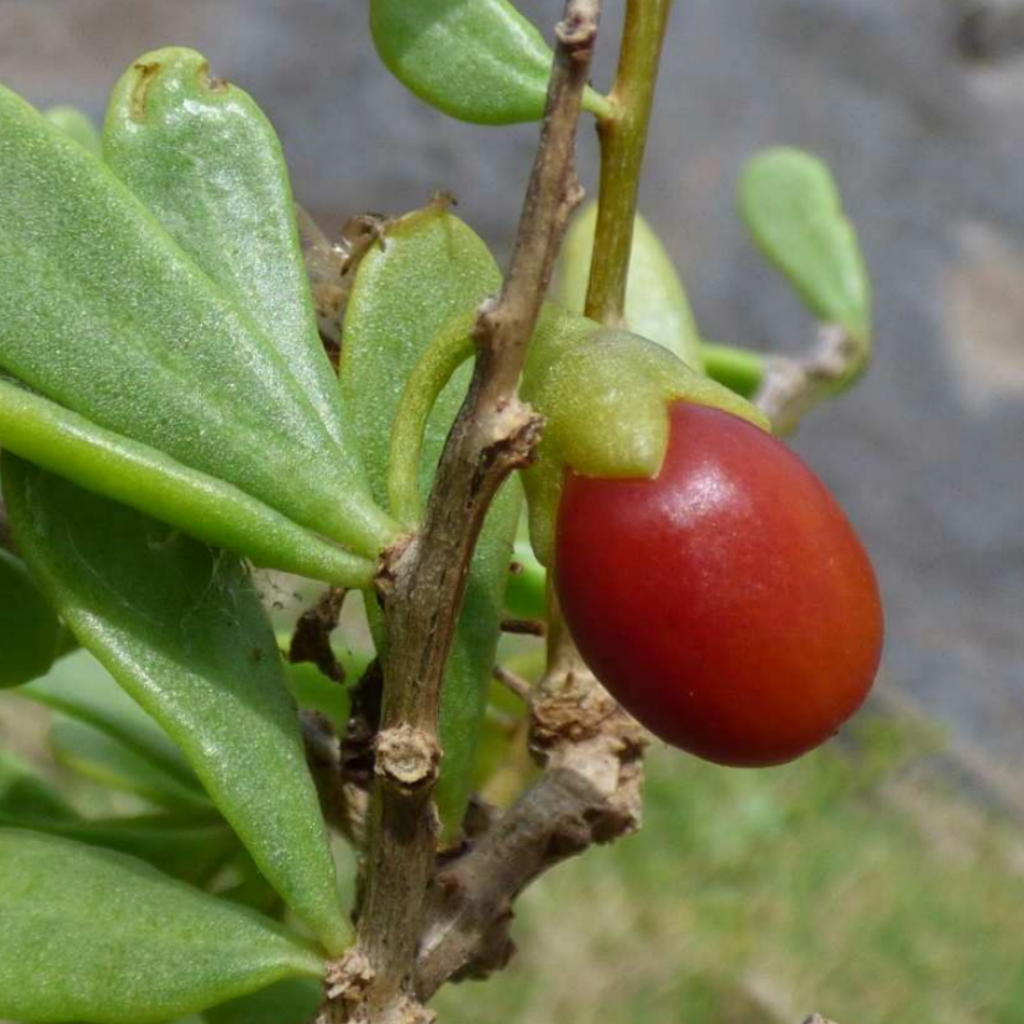
ʻŌhelo kai (Lycium sandwicense) |
Naupaka kahakai (Scaevola taccada) |
ʻĀkulikuli (Sesuvium portulacastrum) |
ʻIlima (Sida fallax) |
Photos
Mokuālai Islet Seabird Sanctuary
Description
Mokuālai is located in Lāʻie Bay, south of Kukuihoʻolua islet, just off of Lāʻie Pt. It is a small coralline islet, approximately 1 acre in size reaching a height of about 20 ft.
Activities
None.
Permits & Rules
- This sanctuary is CLOSED, per administrative rules Chapter 126 (Wildlife Sanctuaries).
- Commercial activities are prohibited.
- Other activities (like scientific research, conservation management, or subsistence, traditional, and customary practices by Native Hawaiians consistent with the long-term preservation of the wildlife sanctuary resources) may be possible with a permit. Individuals interested in permits should review the detailed information on our Permits & Guidelines page and contact their local DOFAW office.
Some Native Plants & Animals
These are examples of native species associated with this site. This is not intended to be a comprehensive species inventory.
|
|
|
|
|
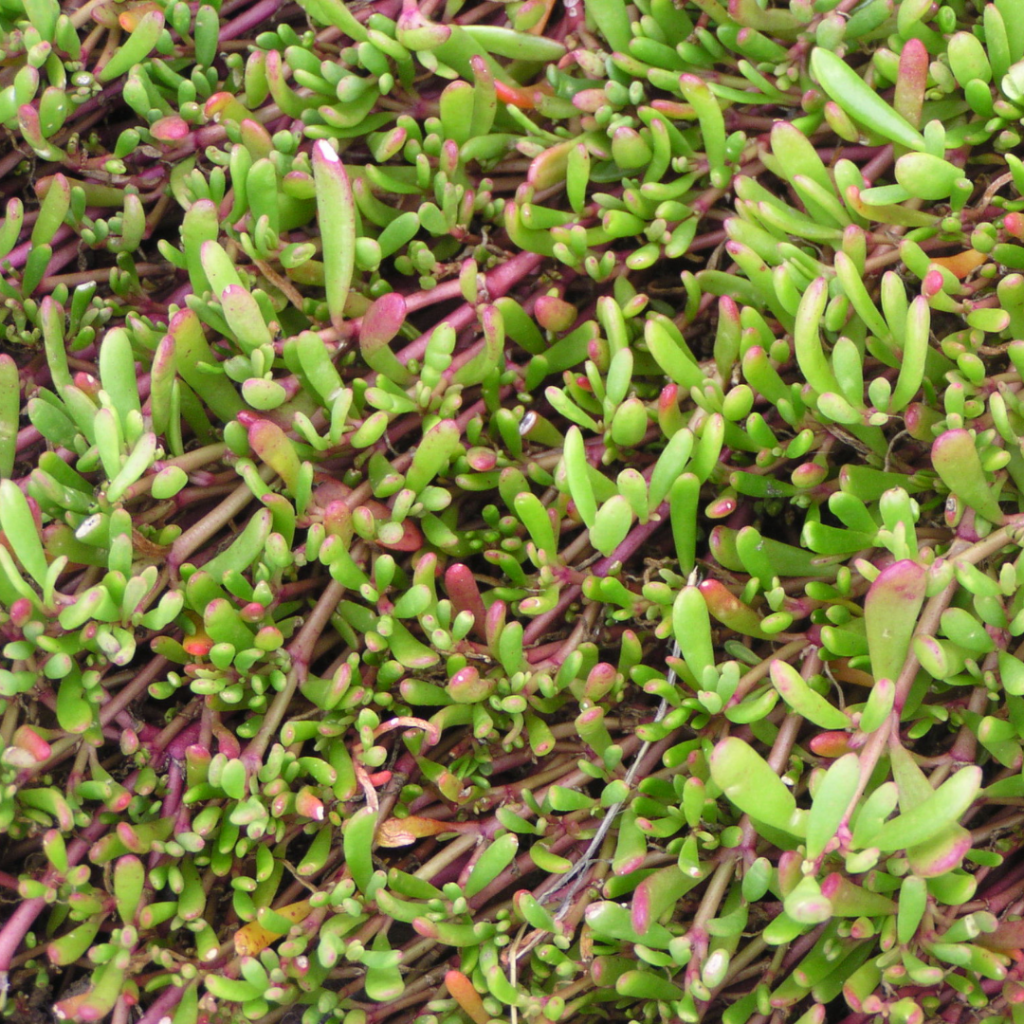
ʻĀkulikuli (Sesuvium portulacastrum) |
|
|
|




